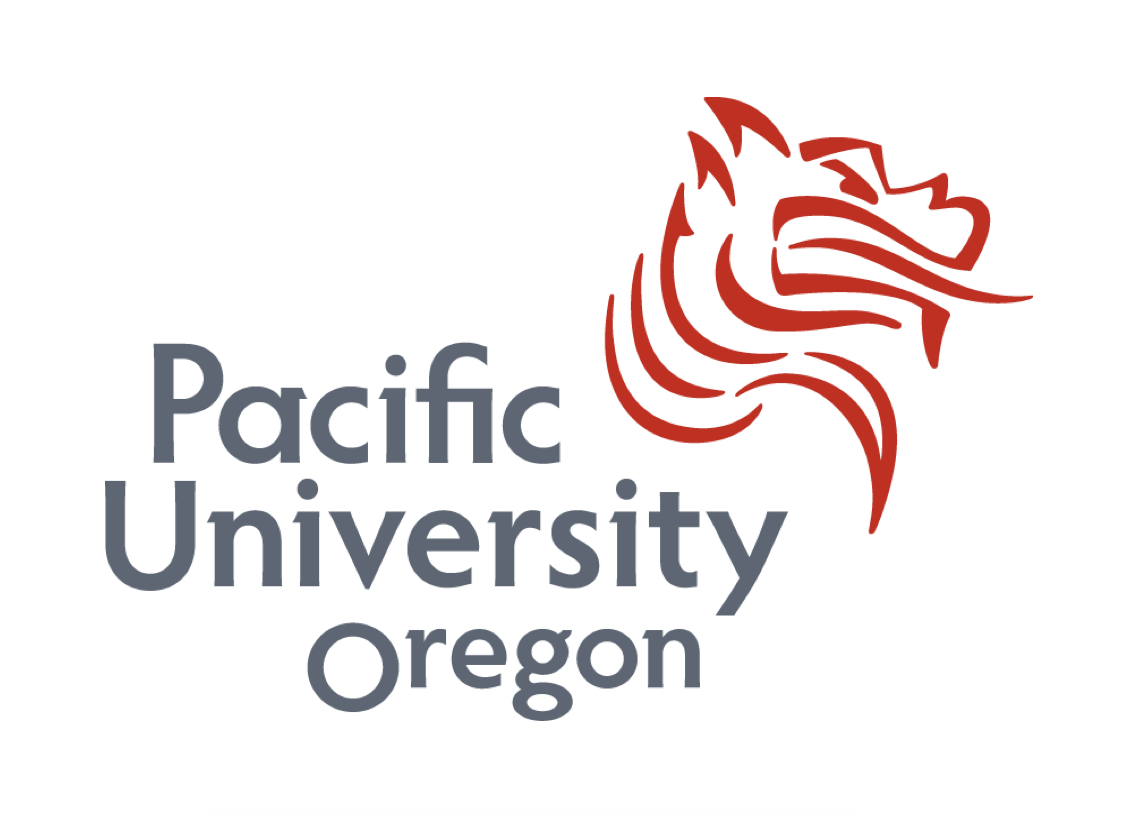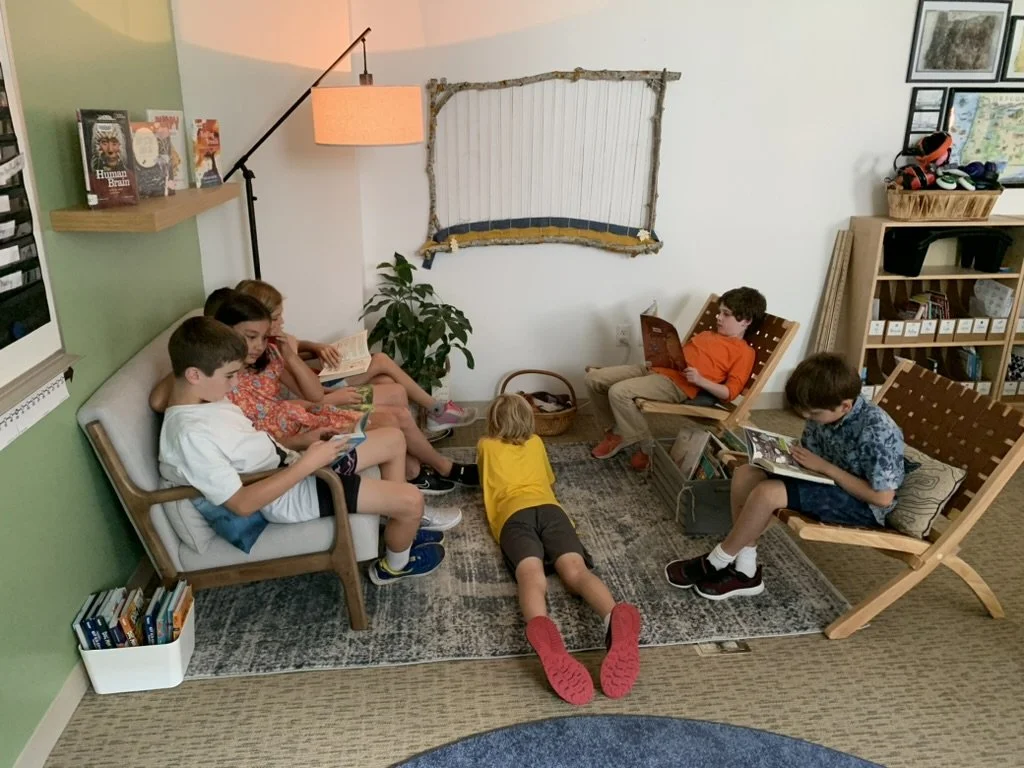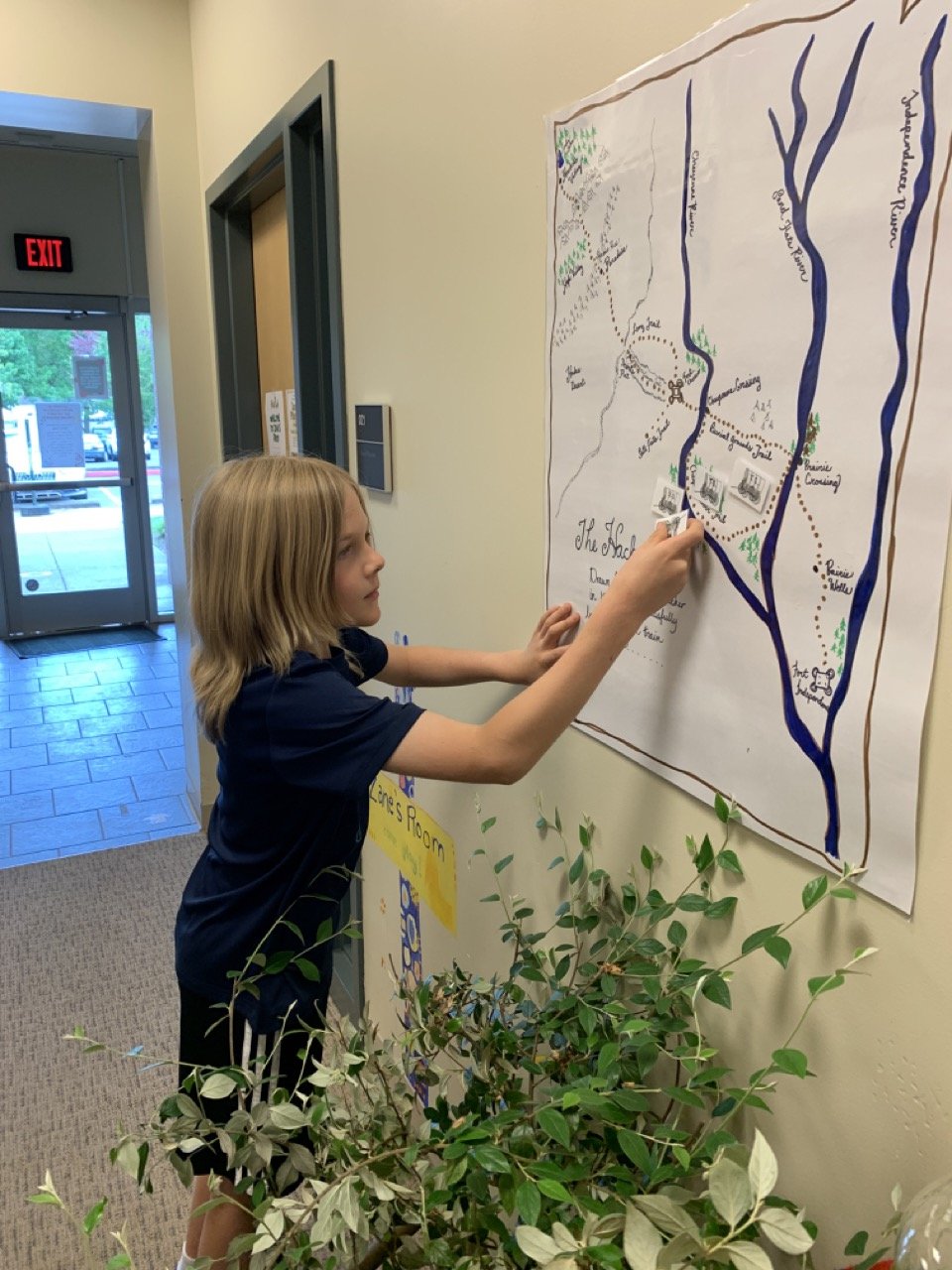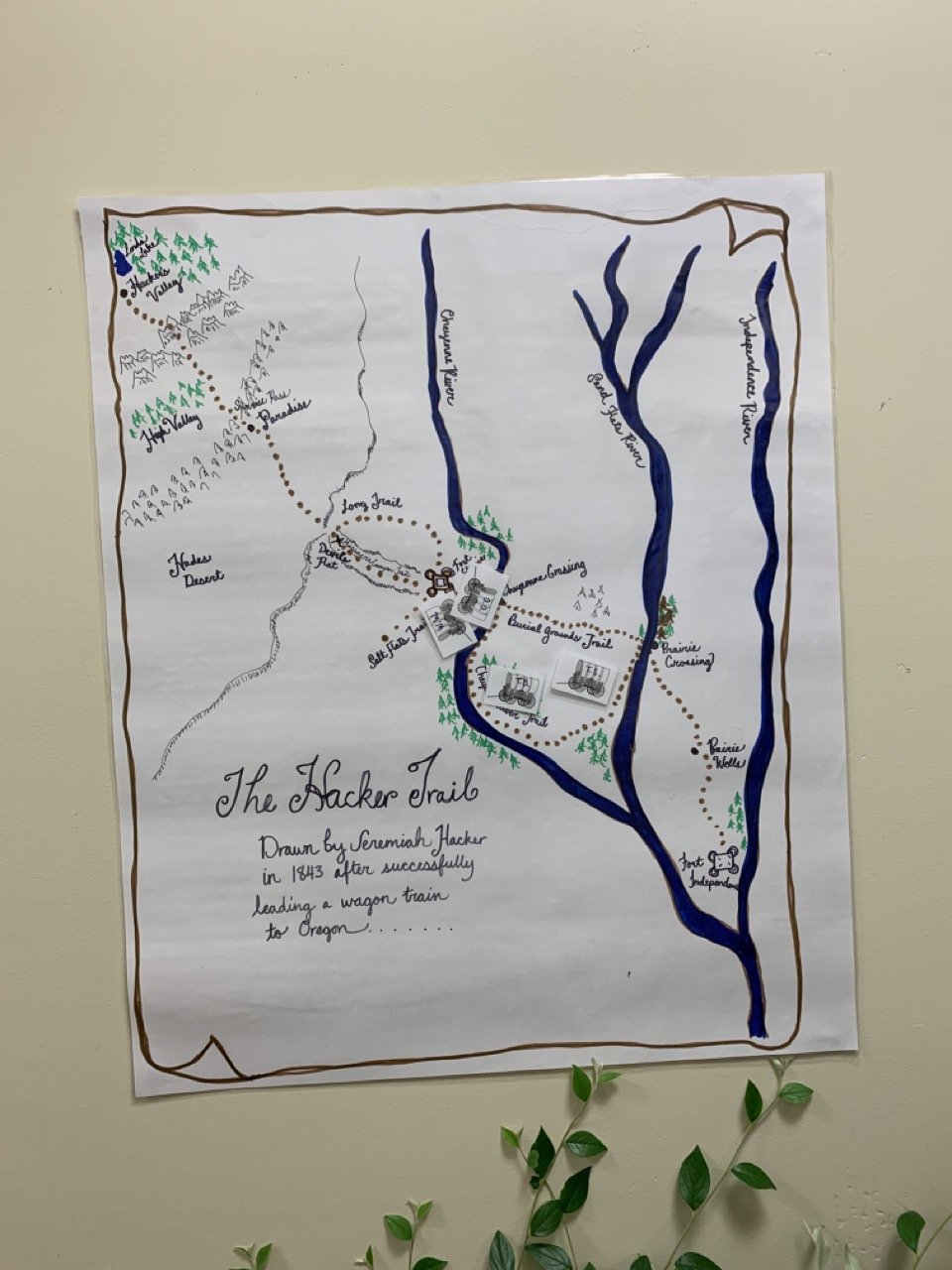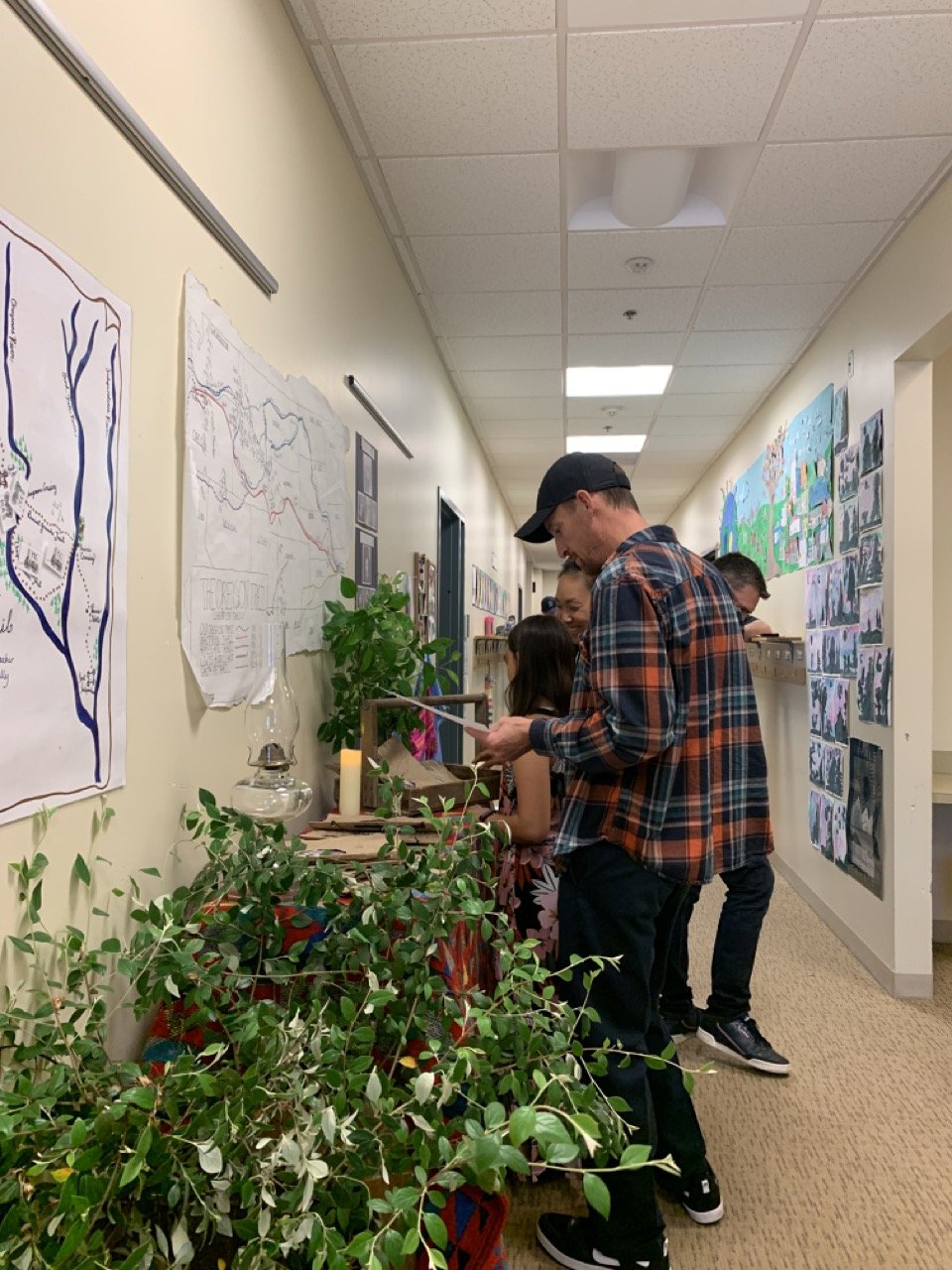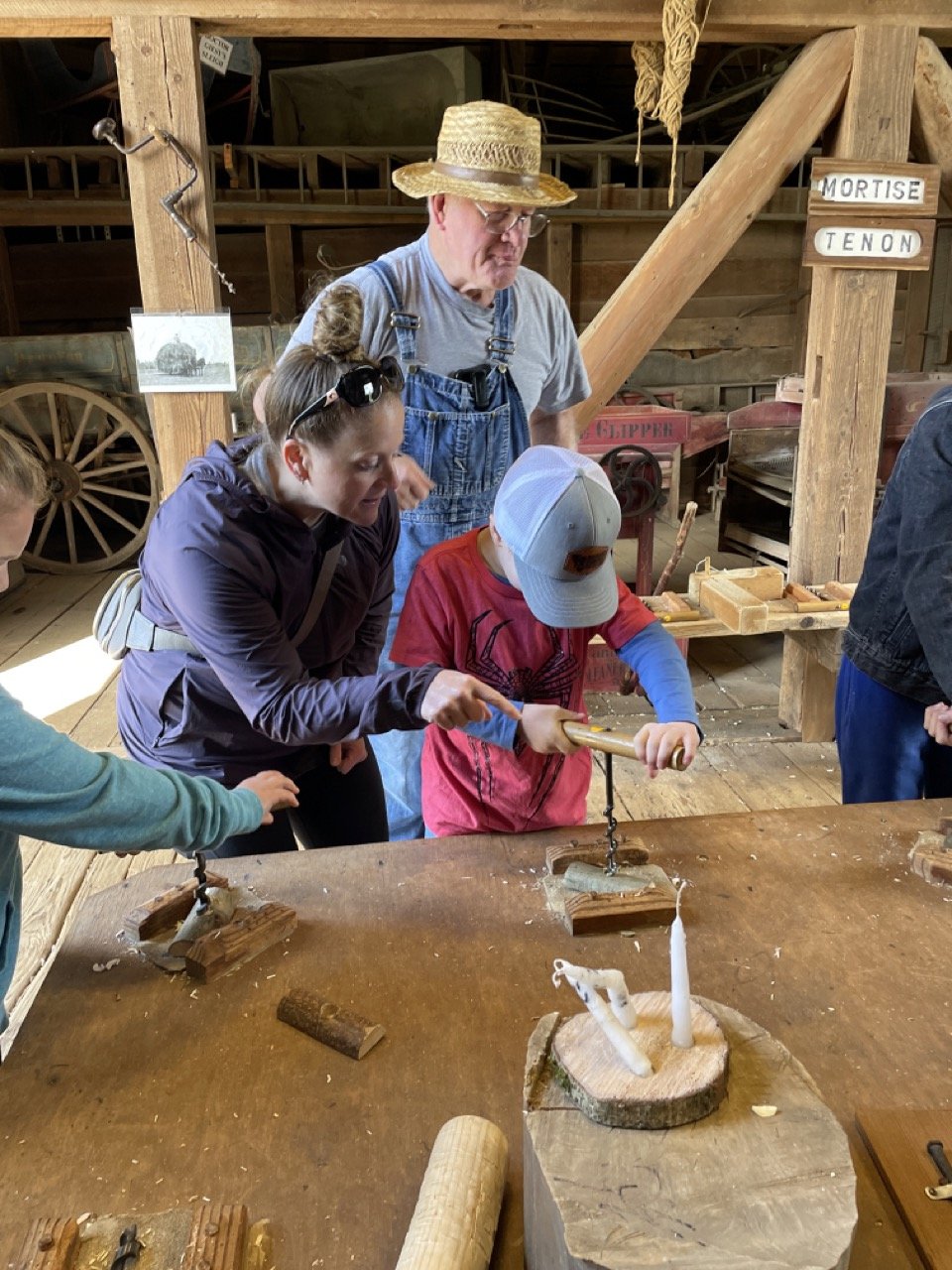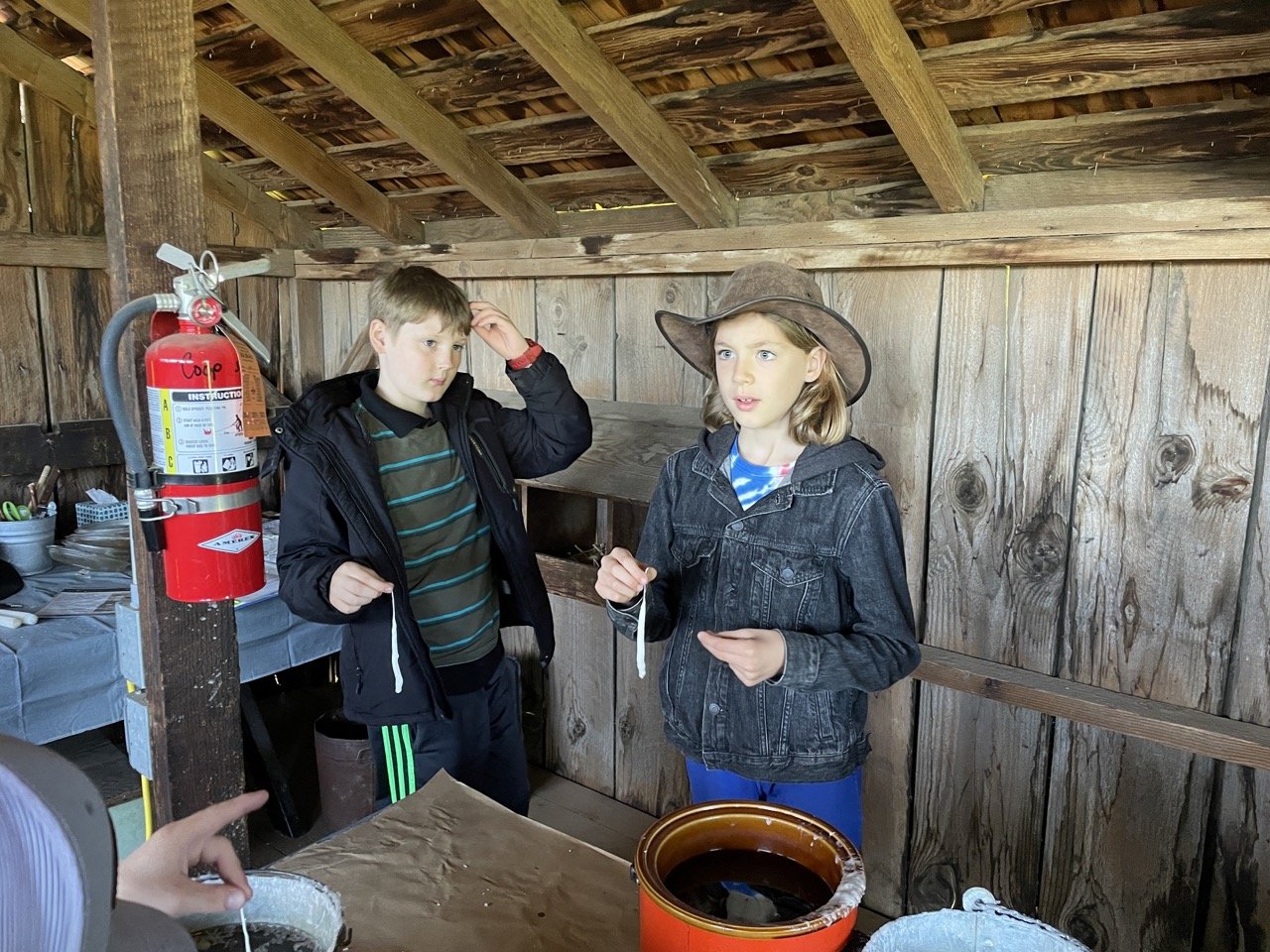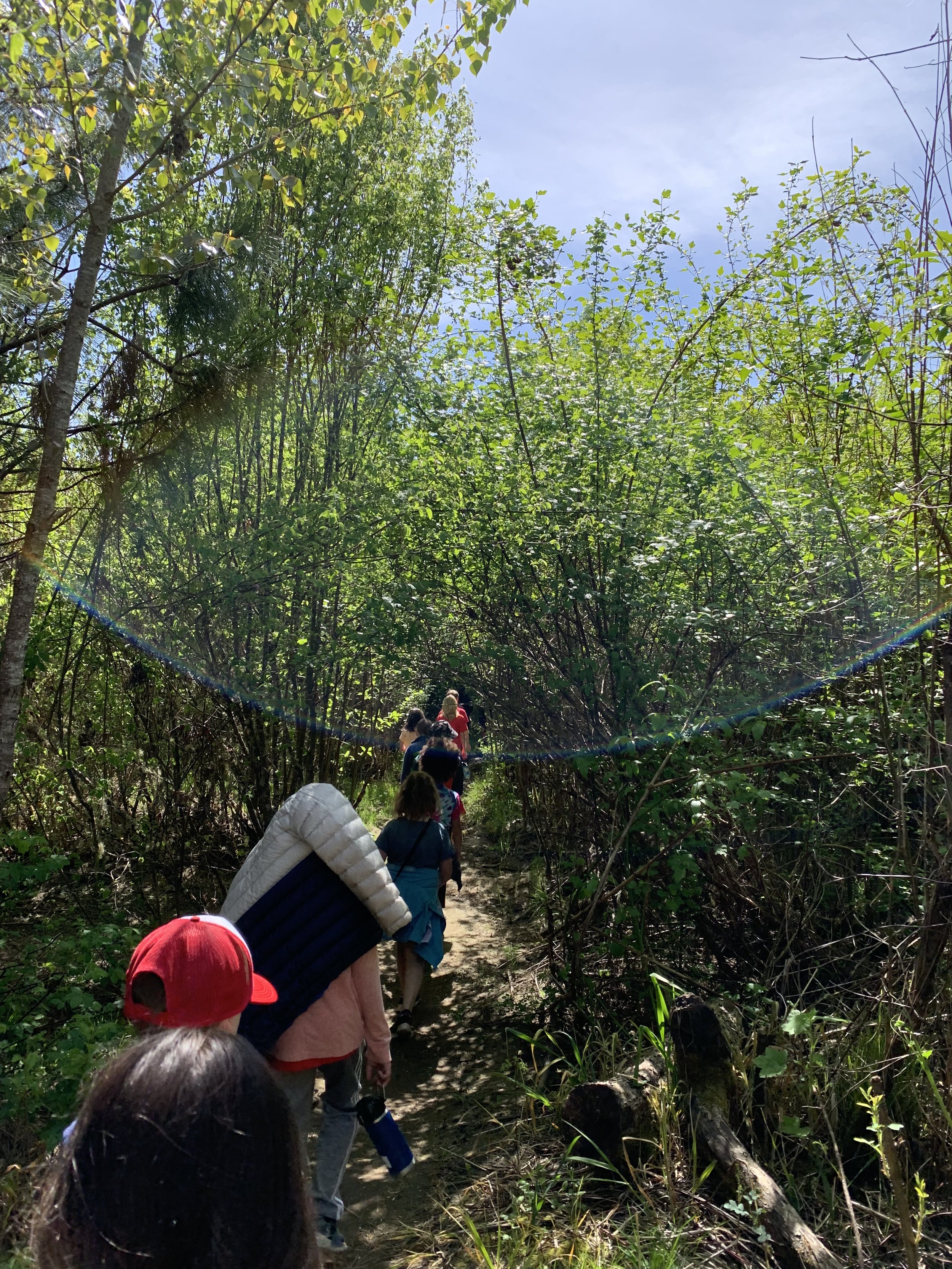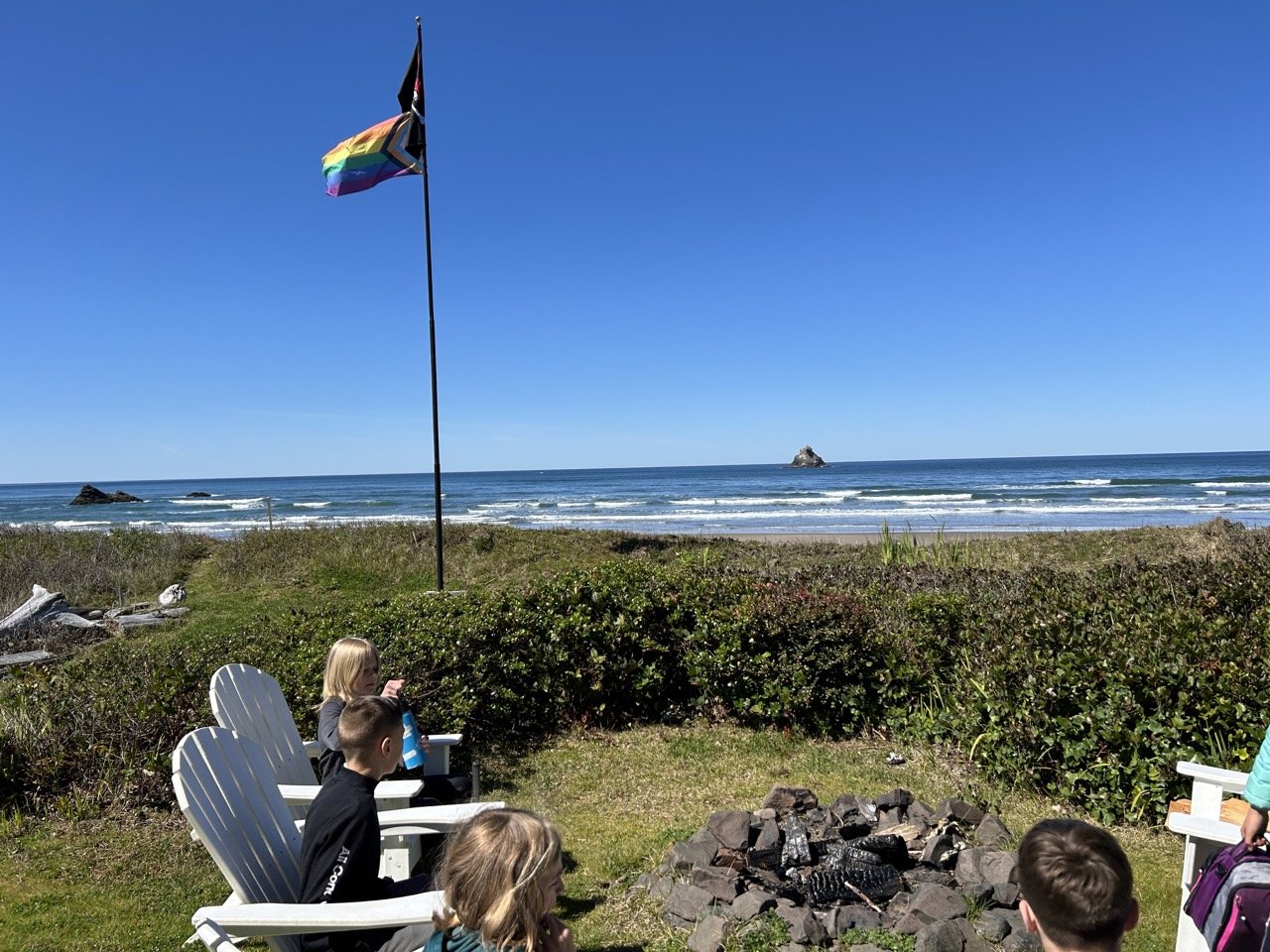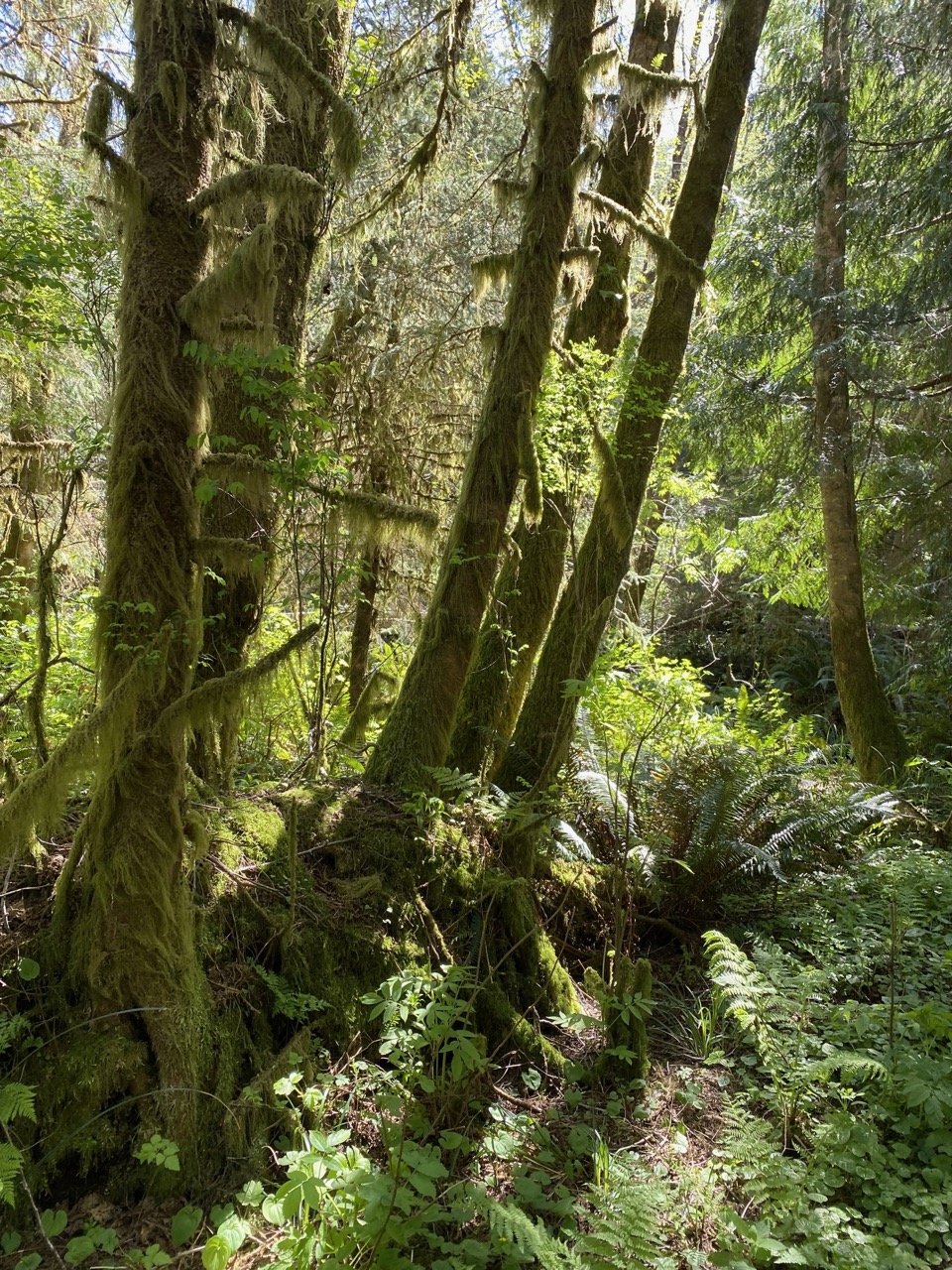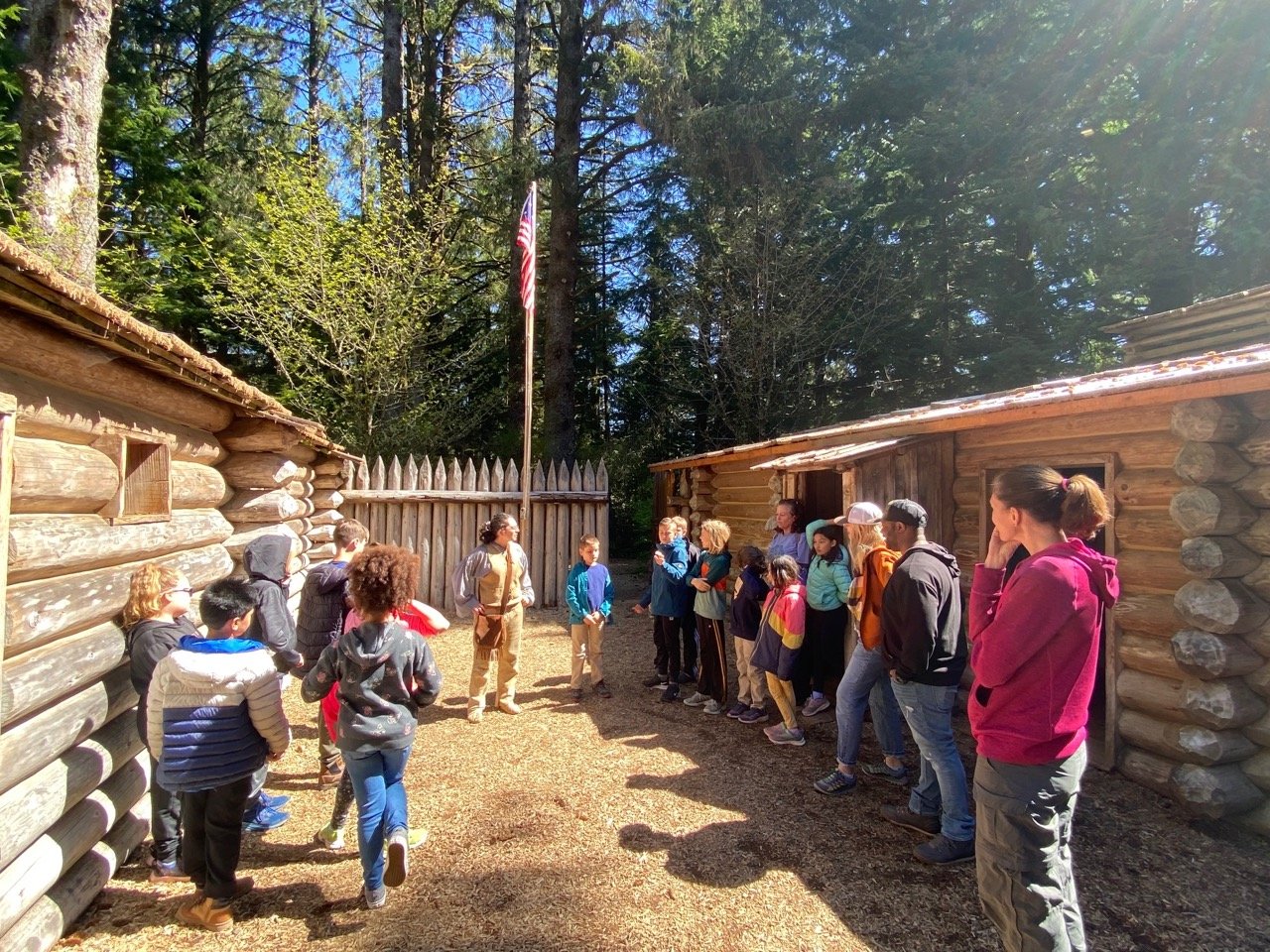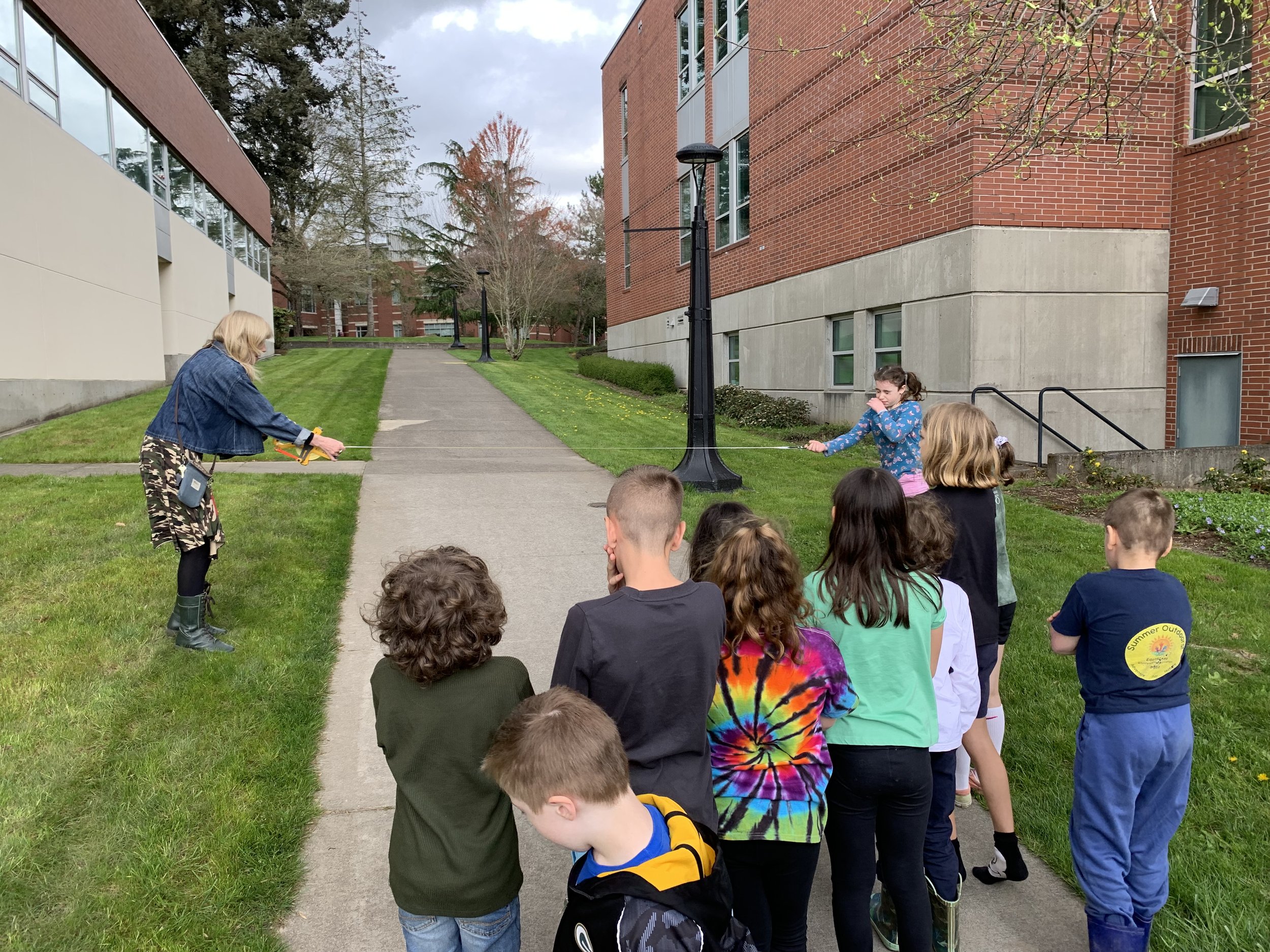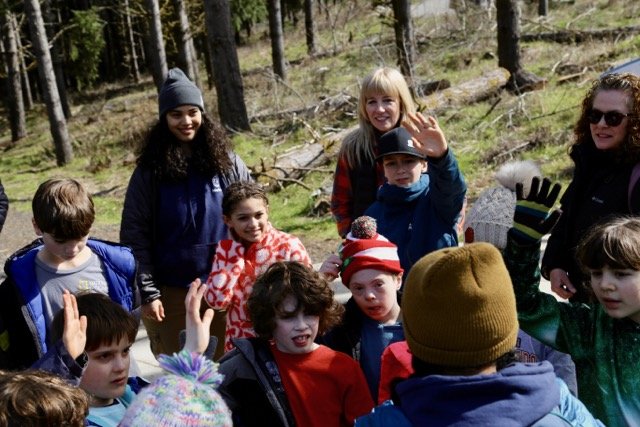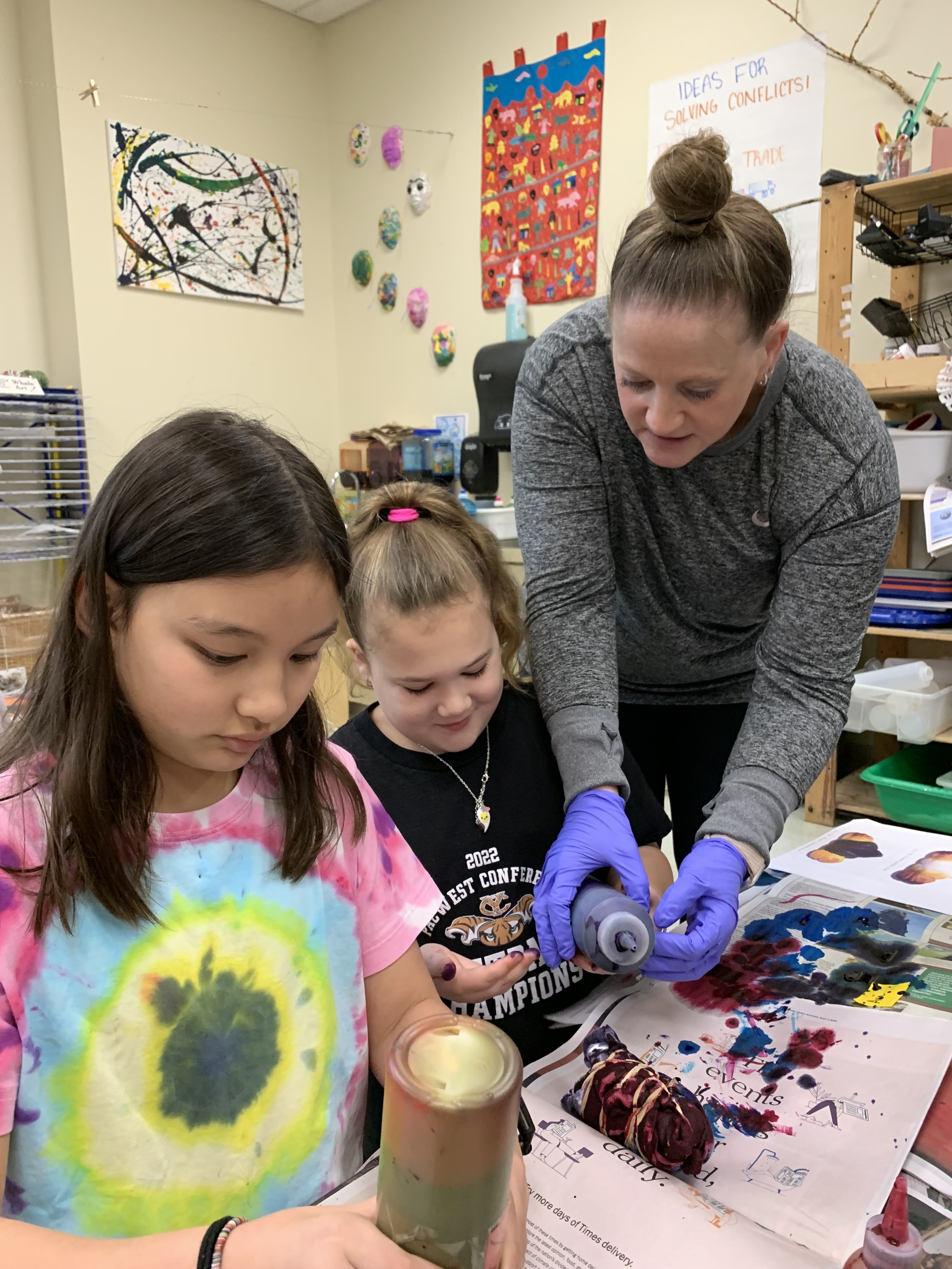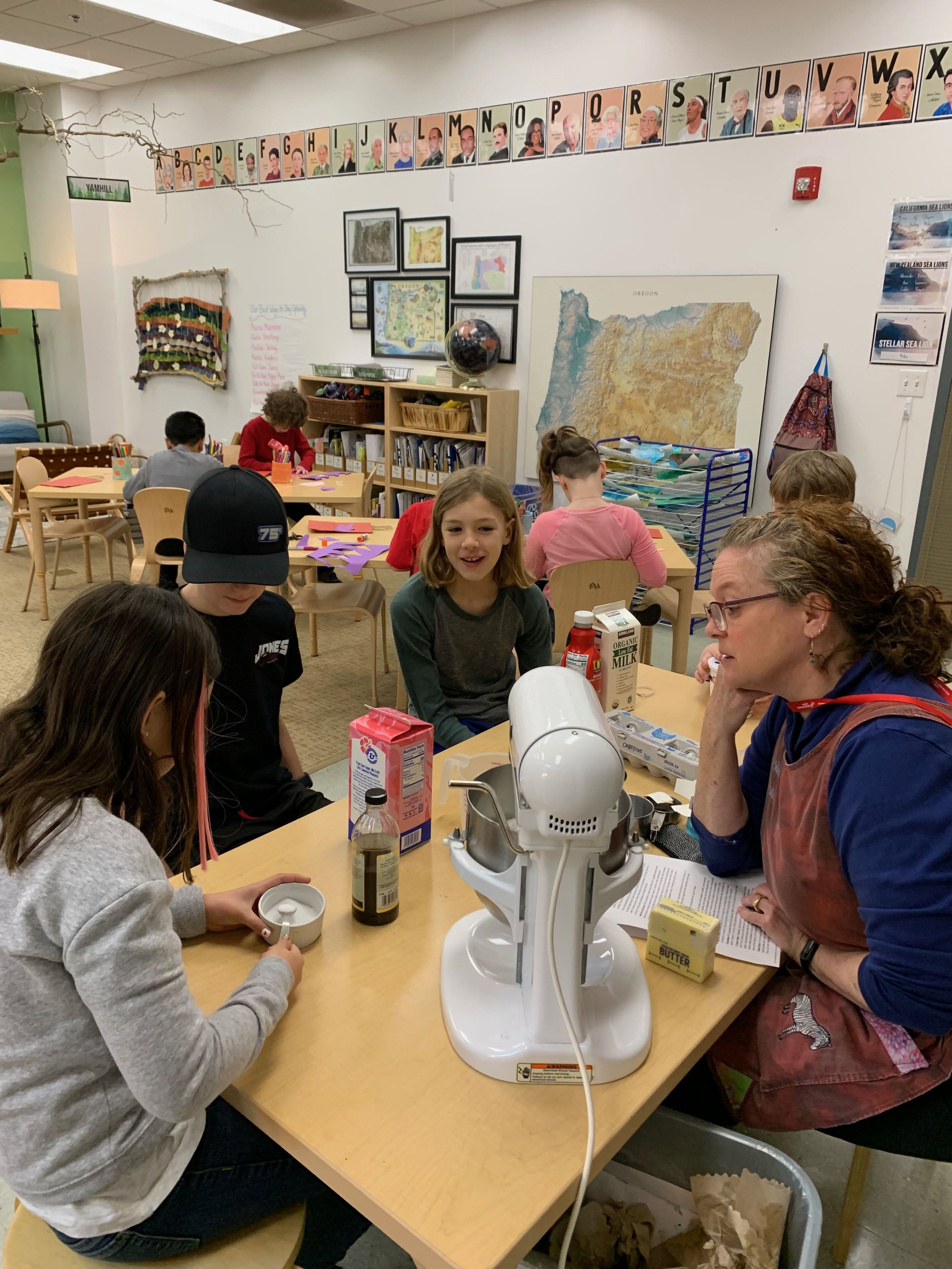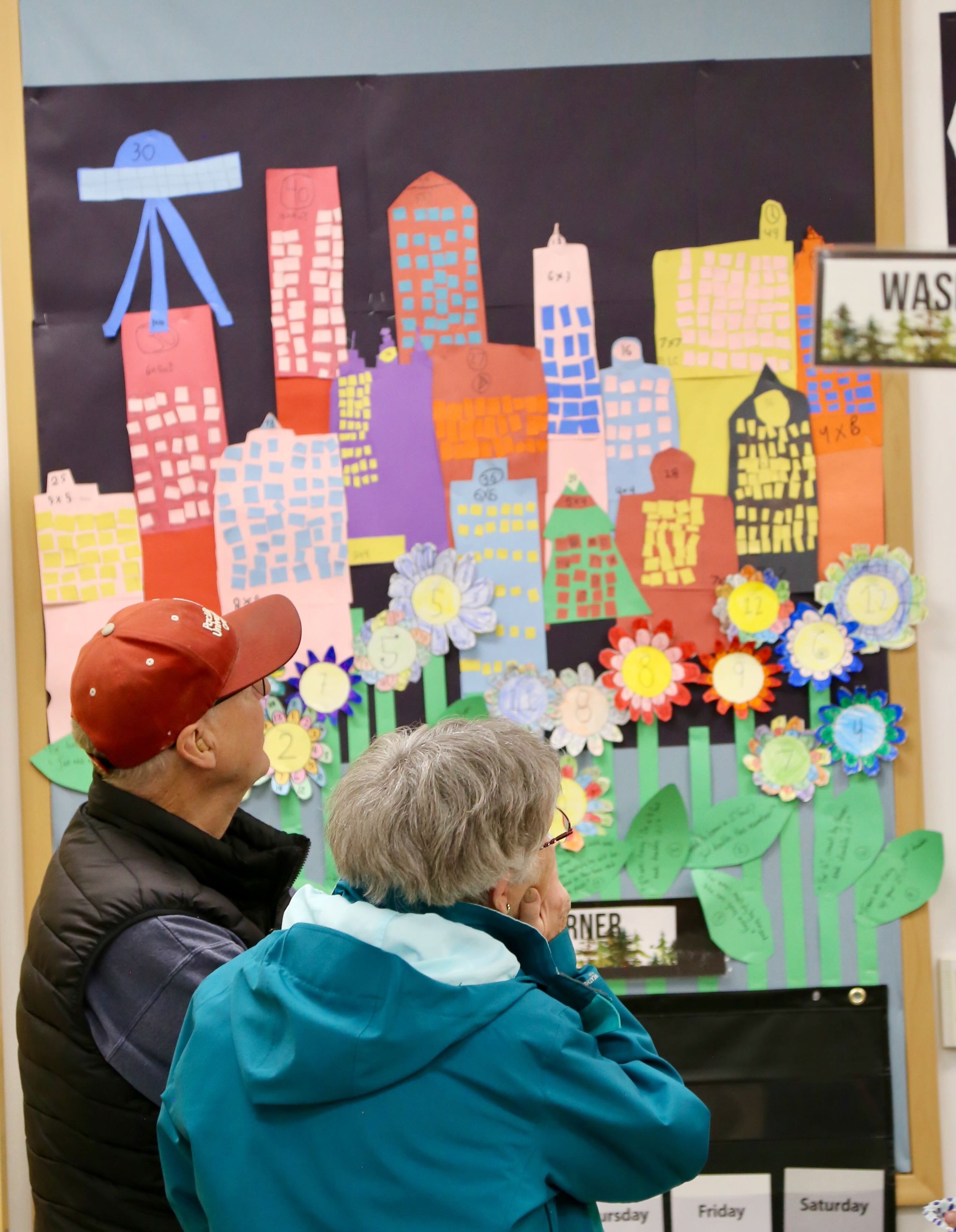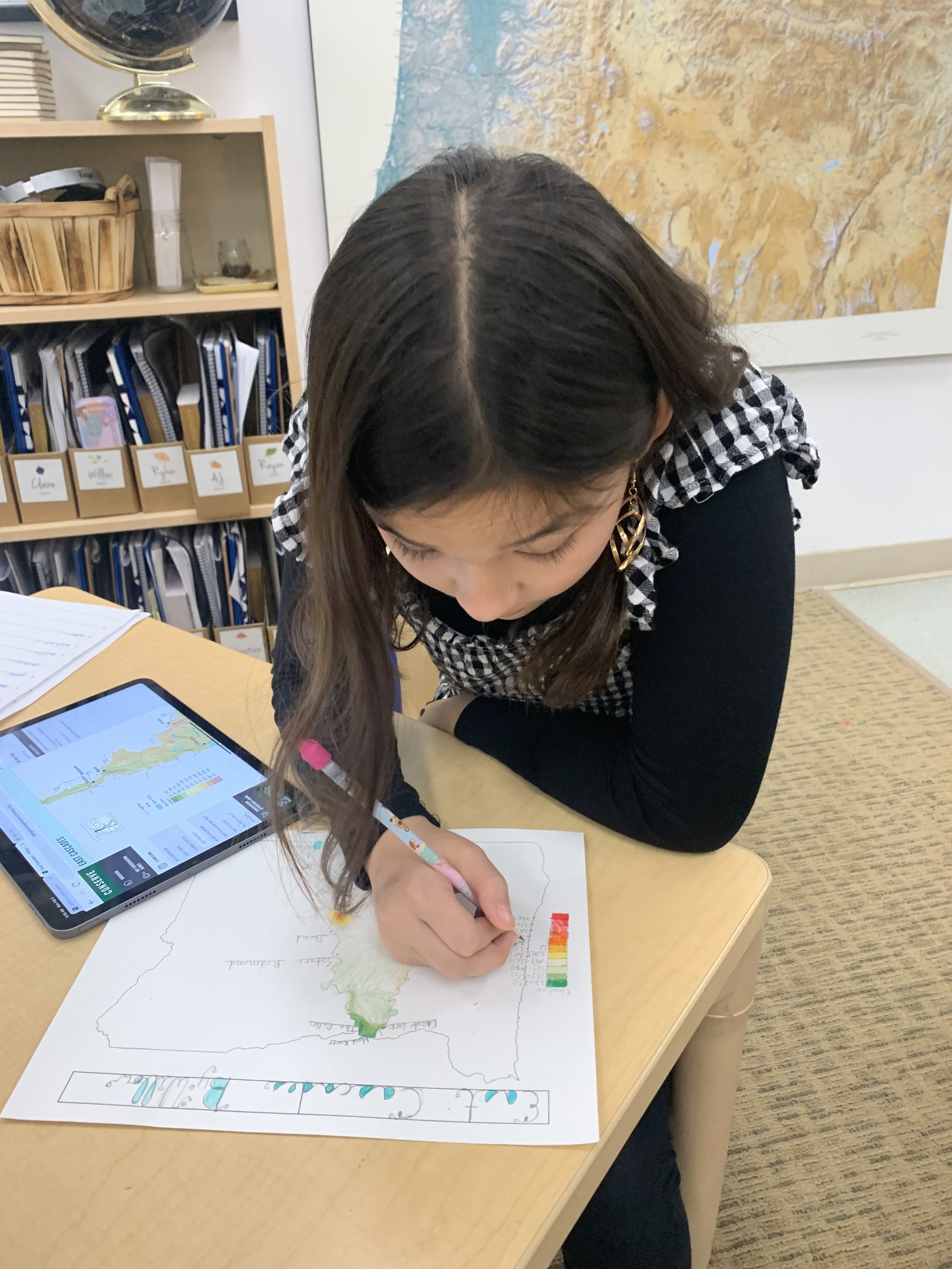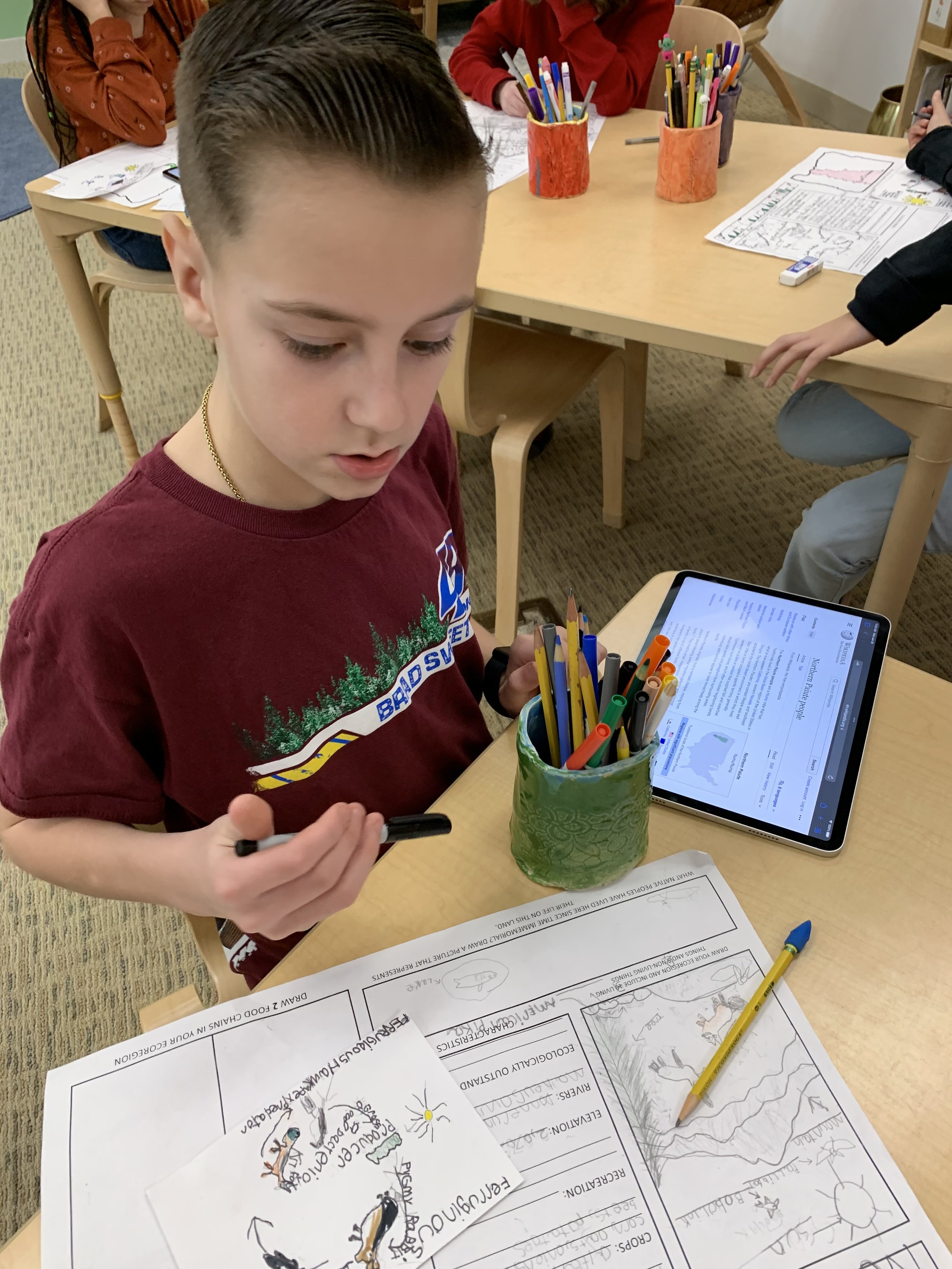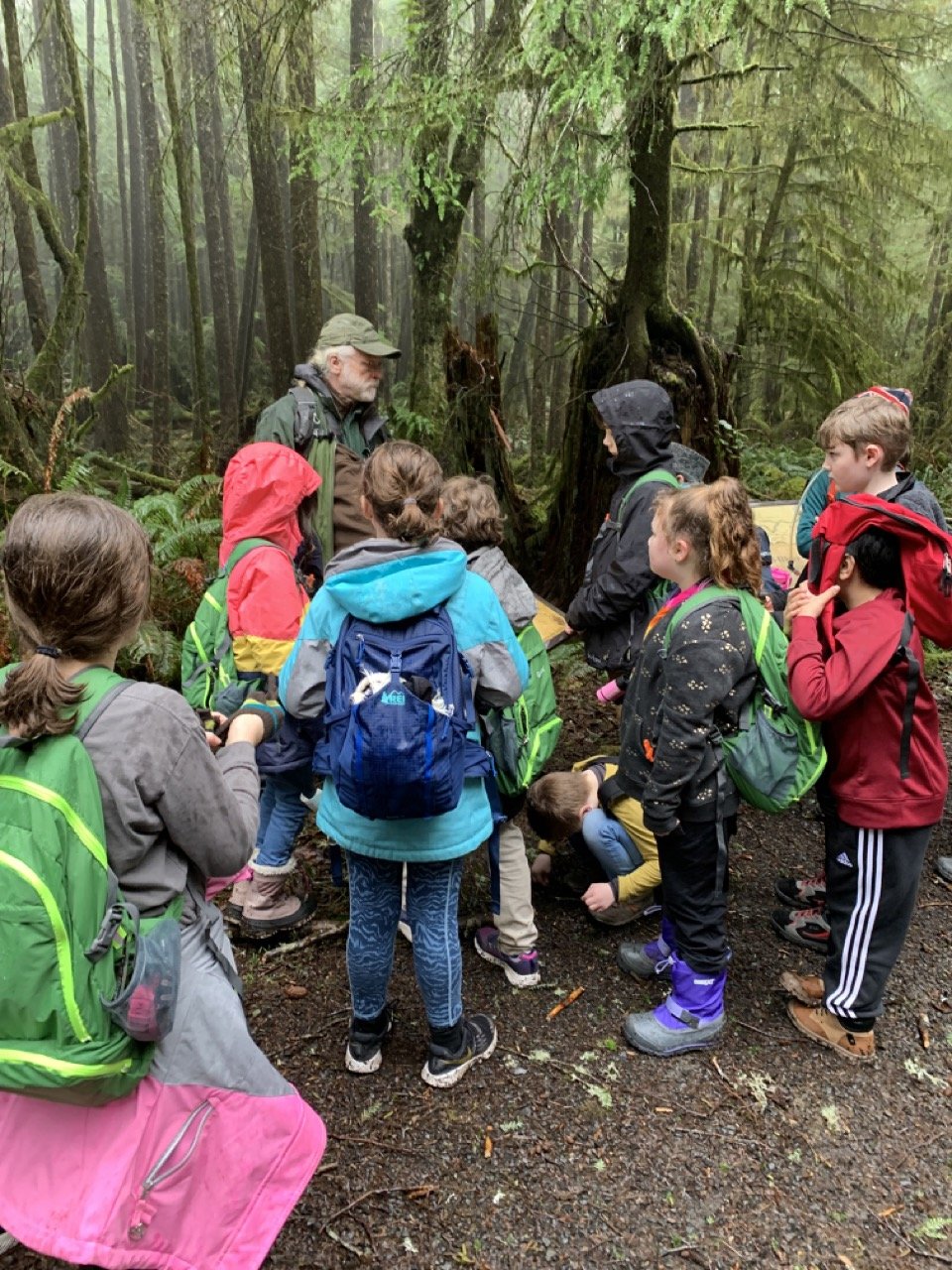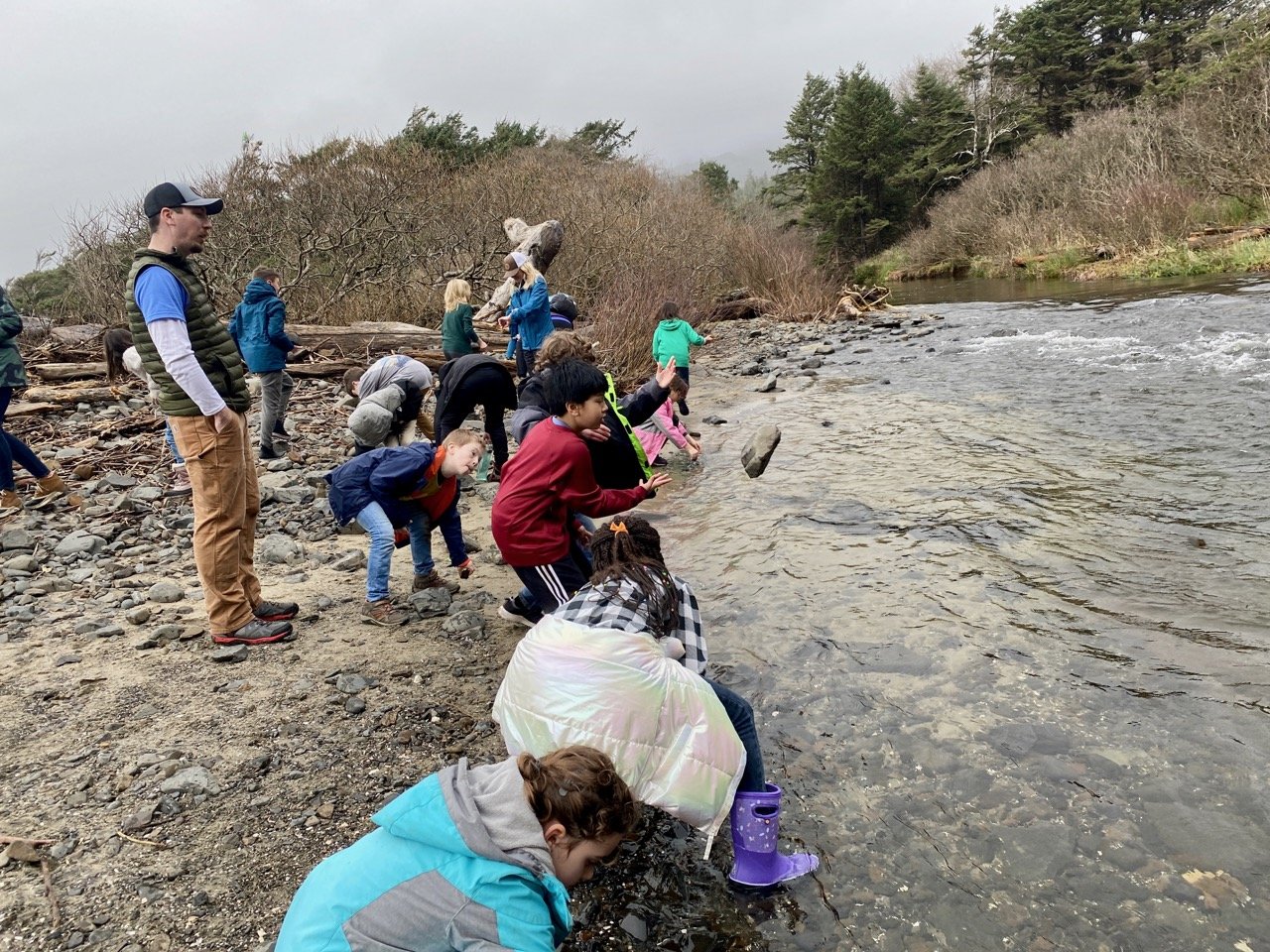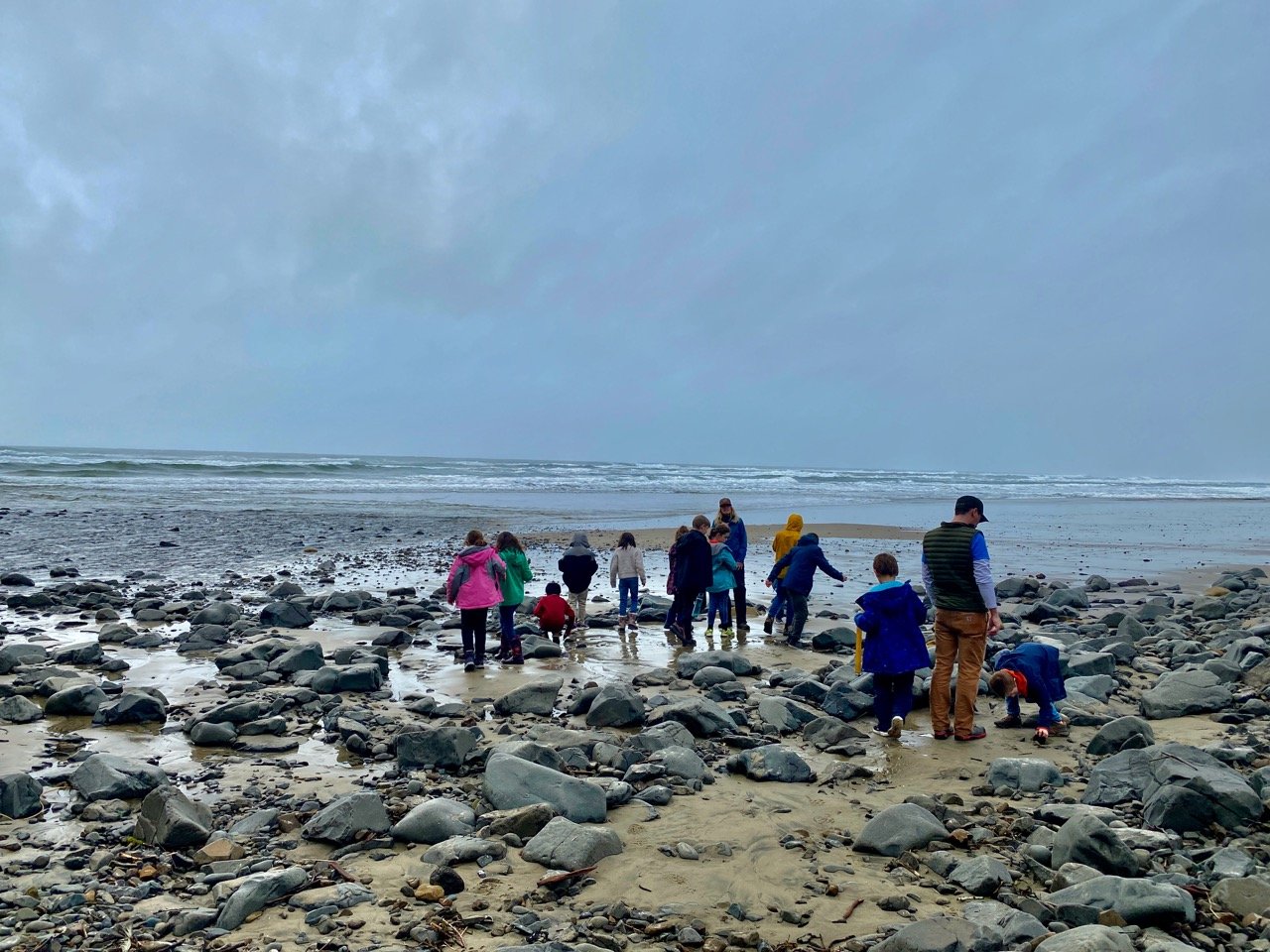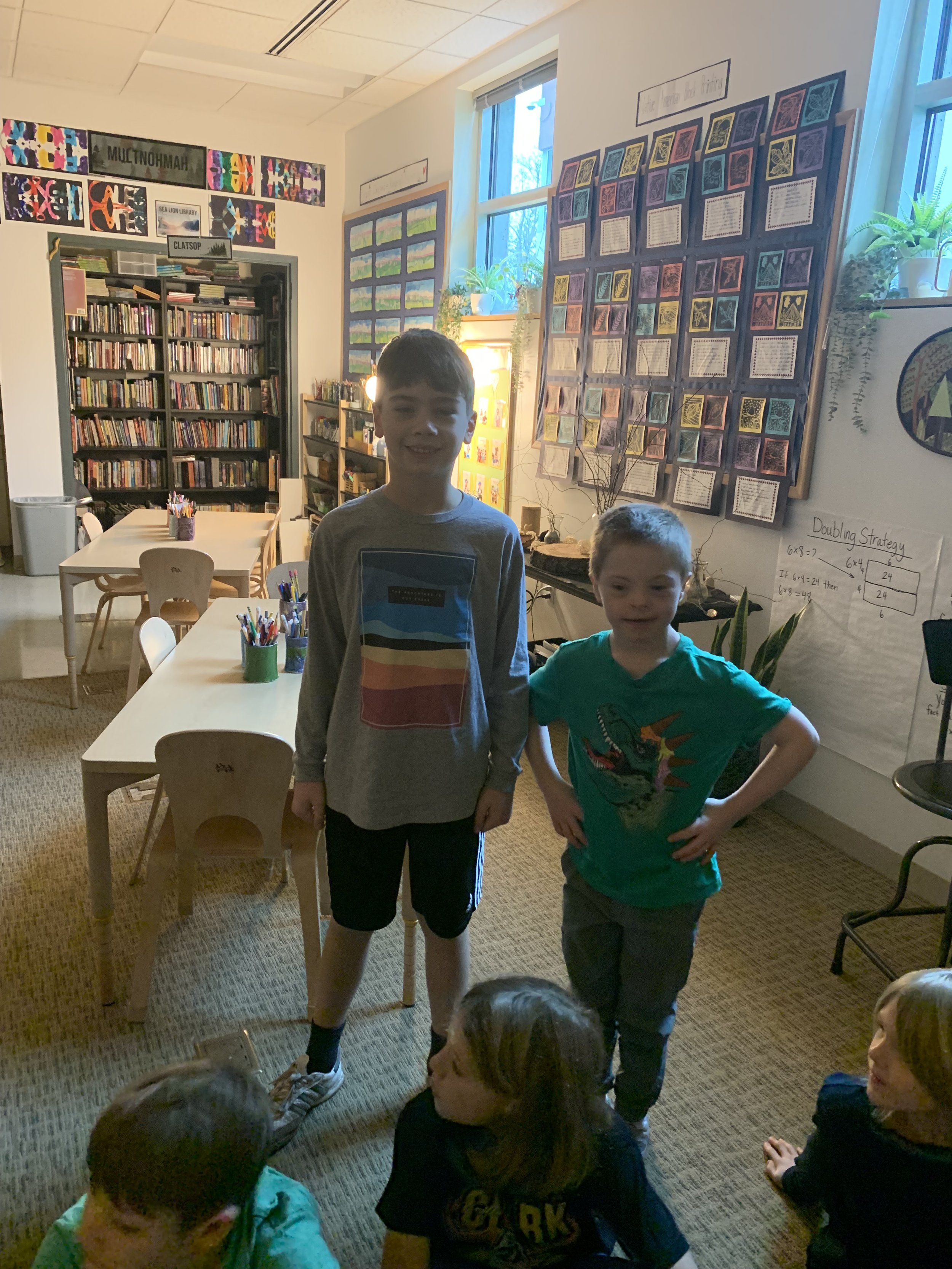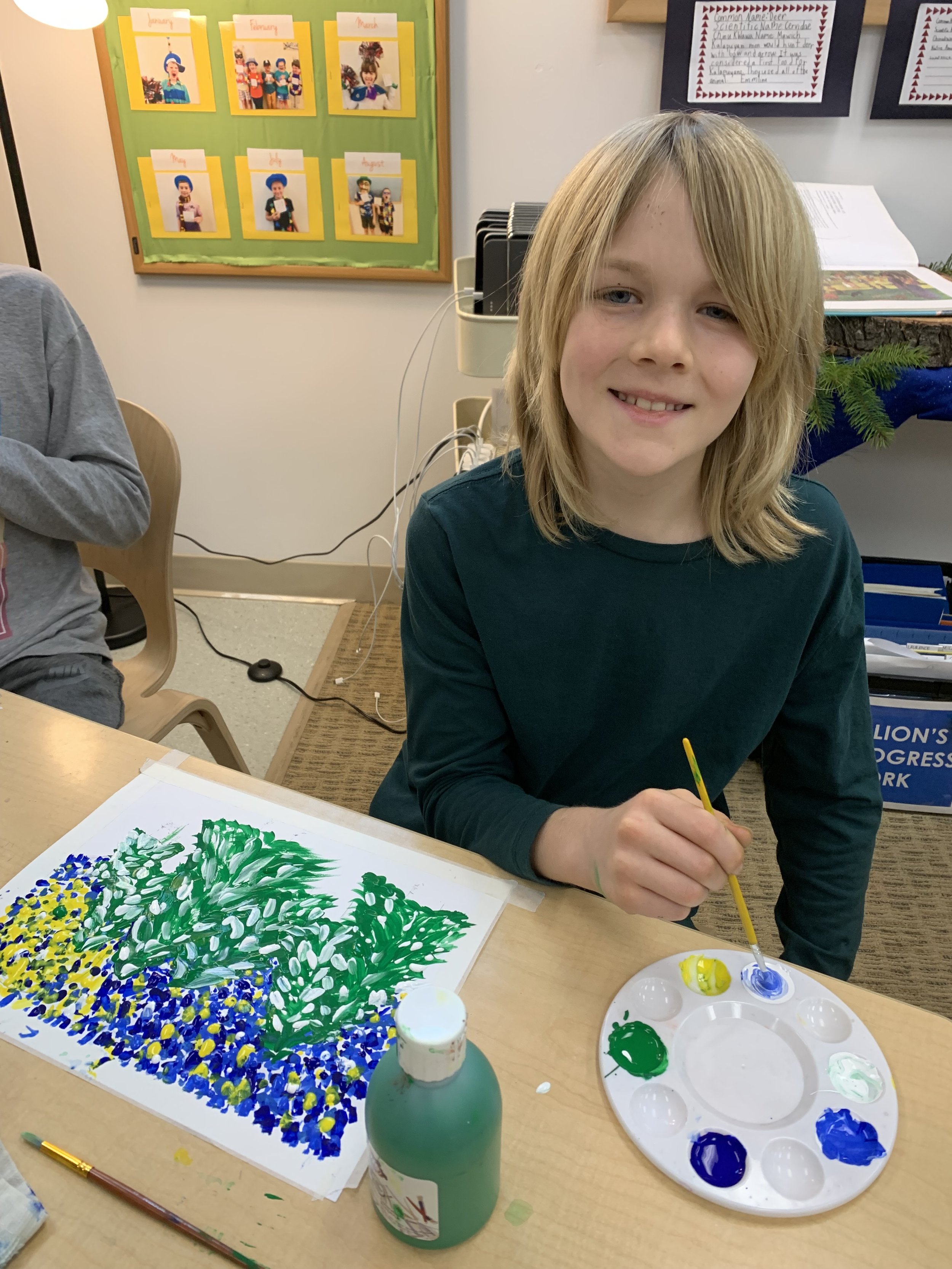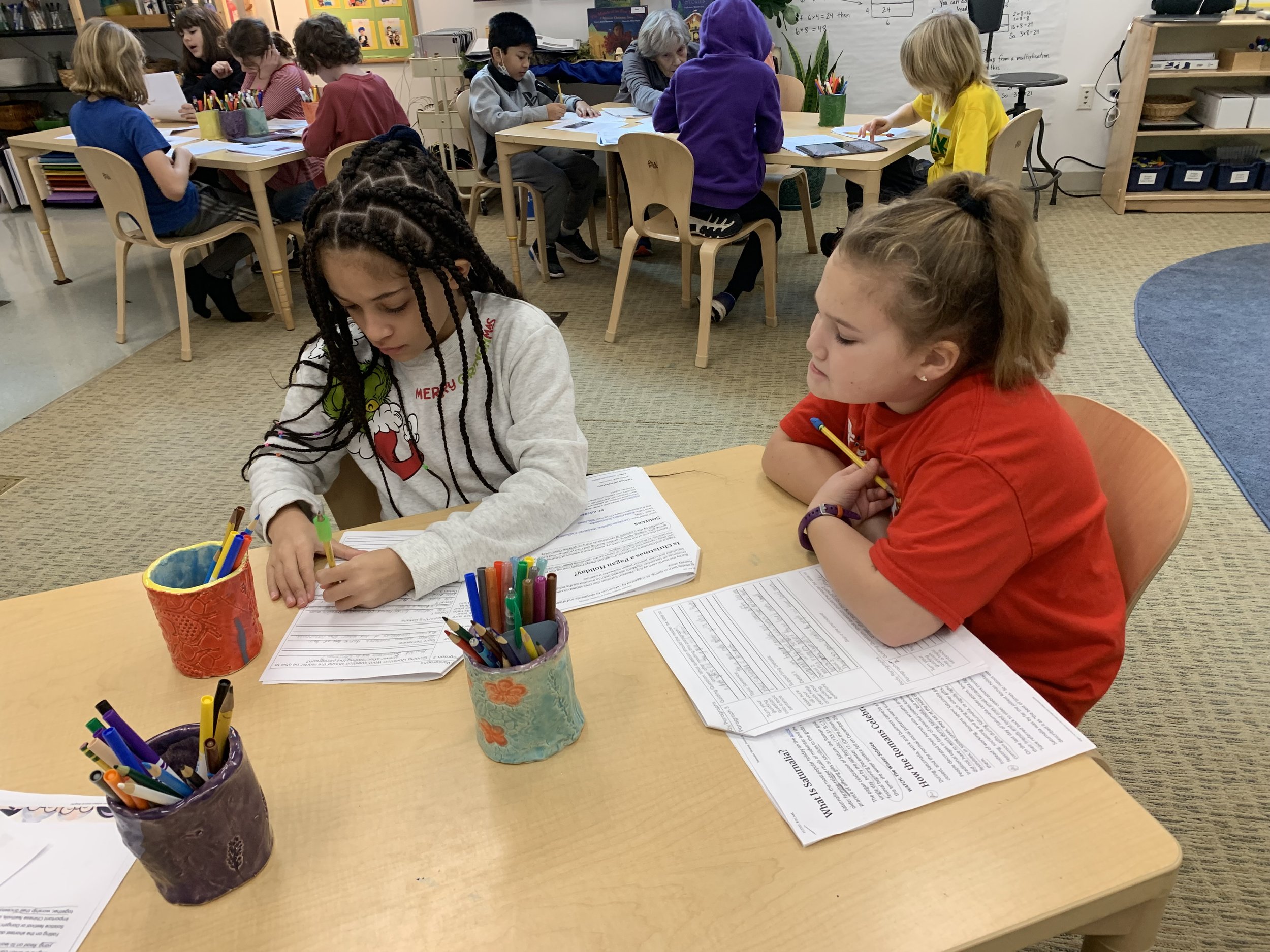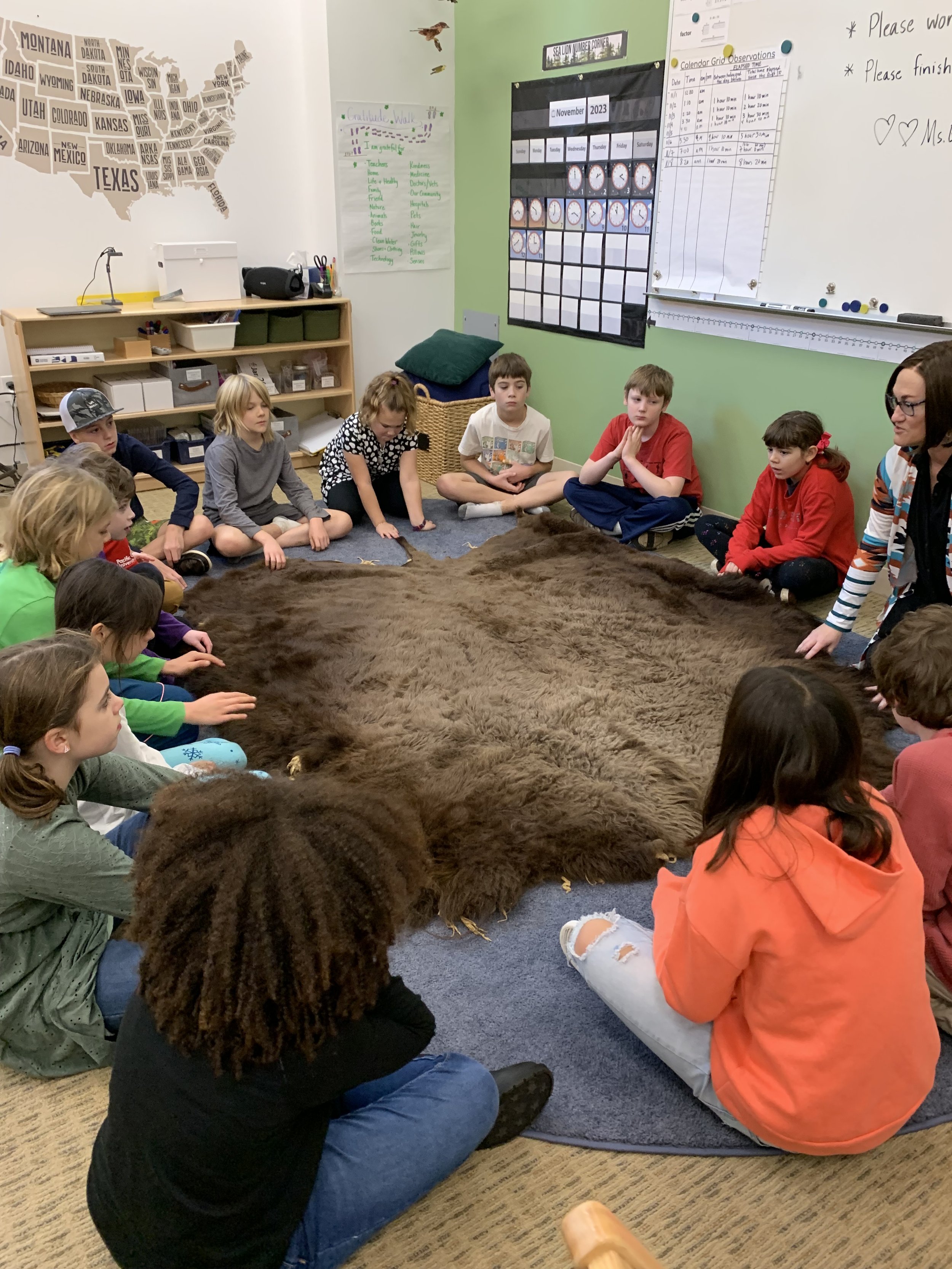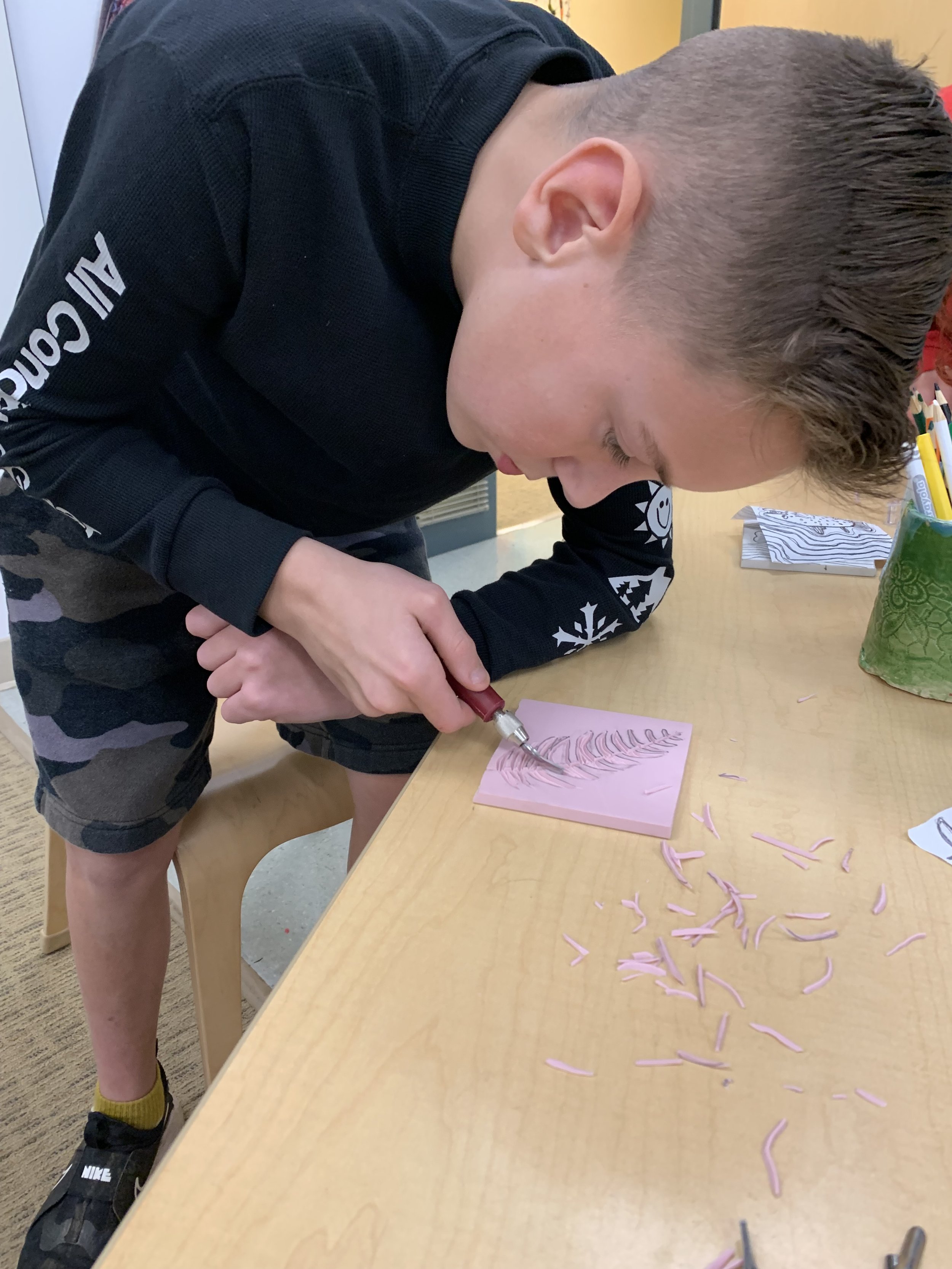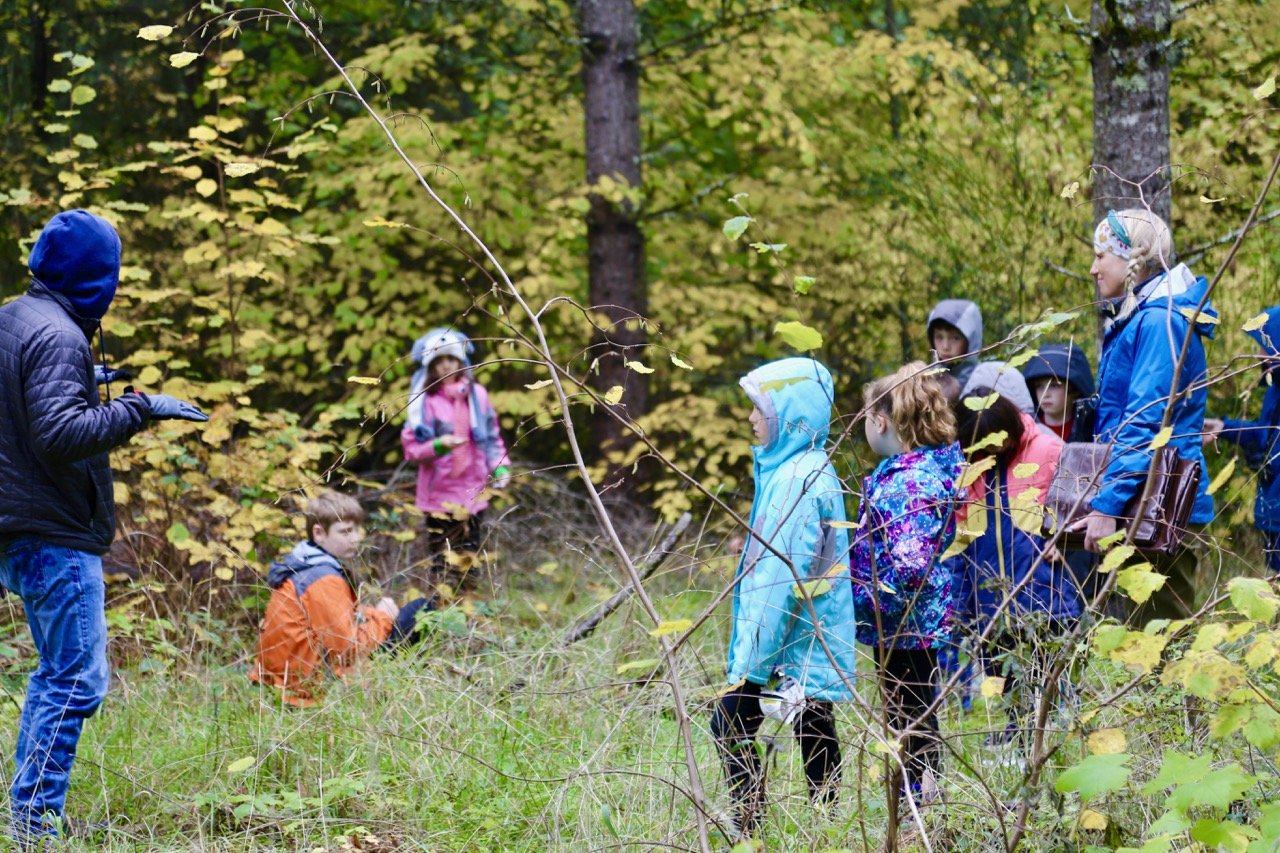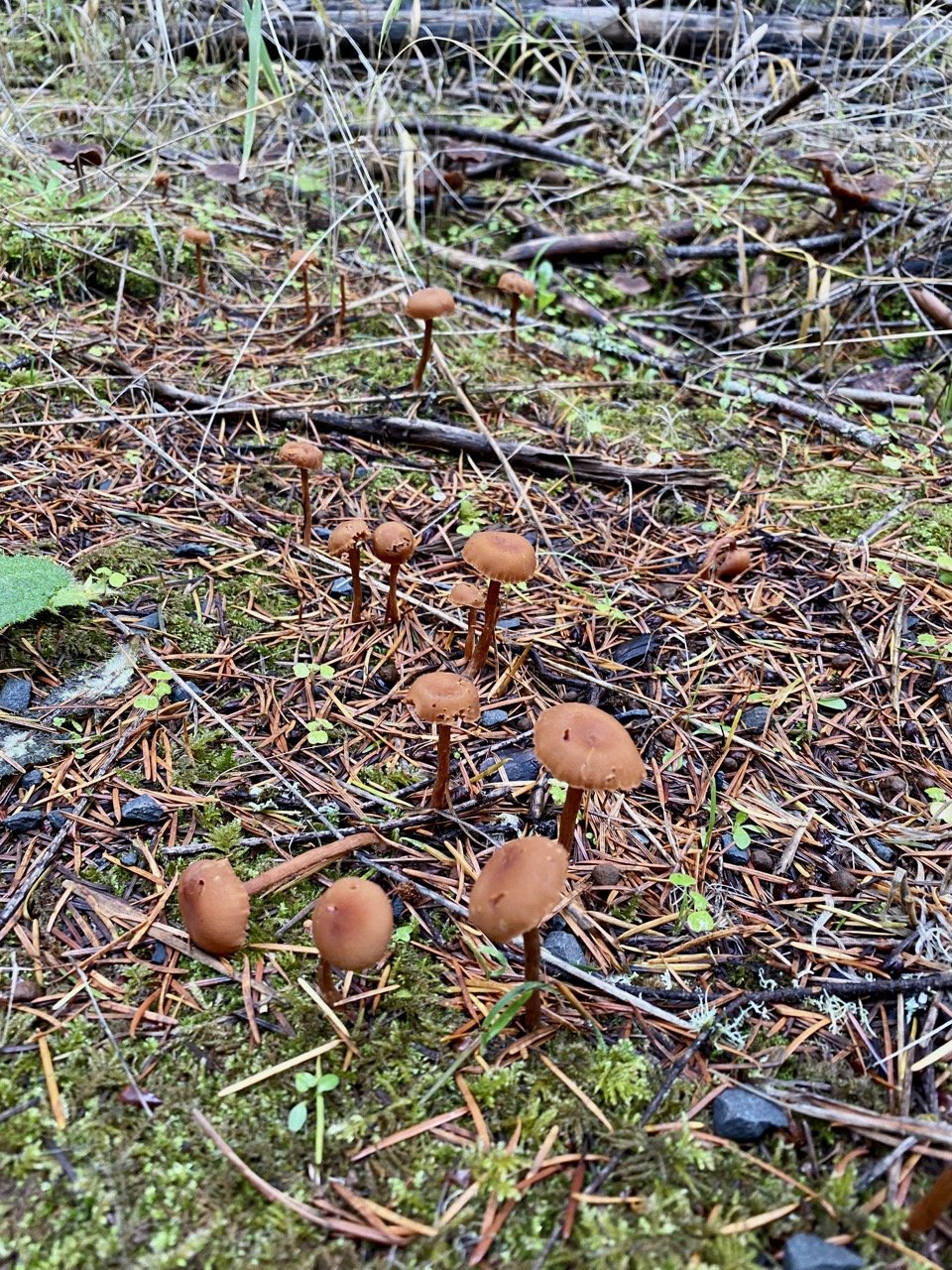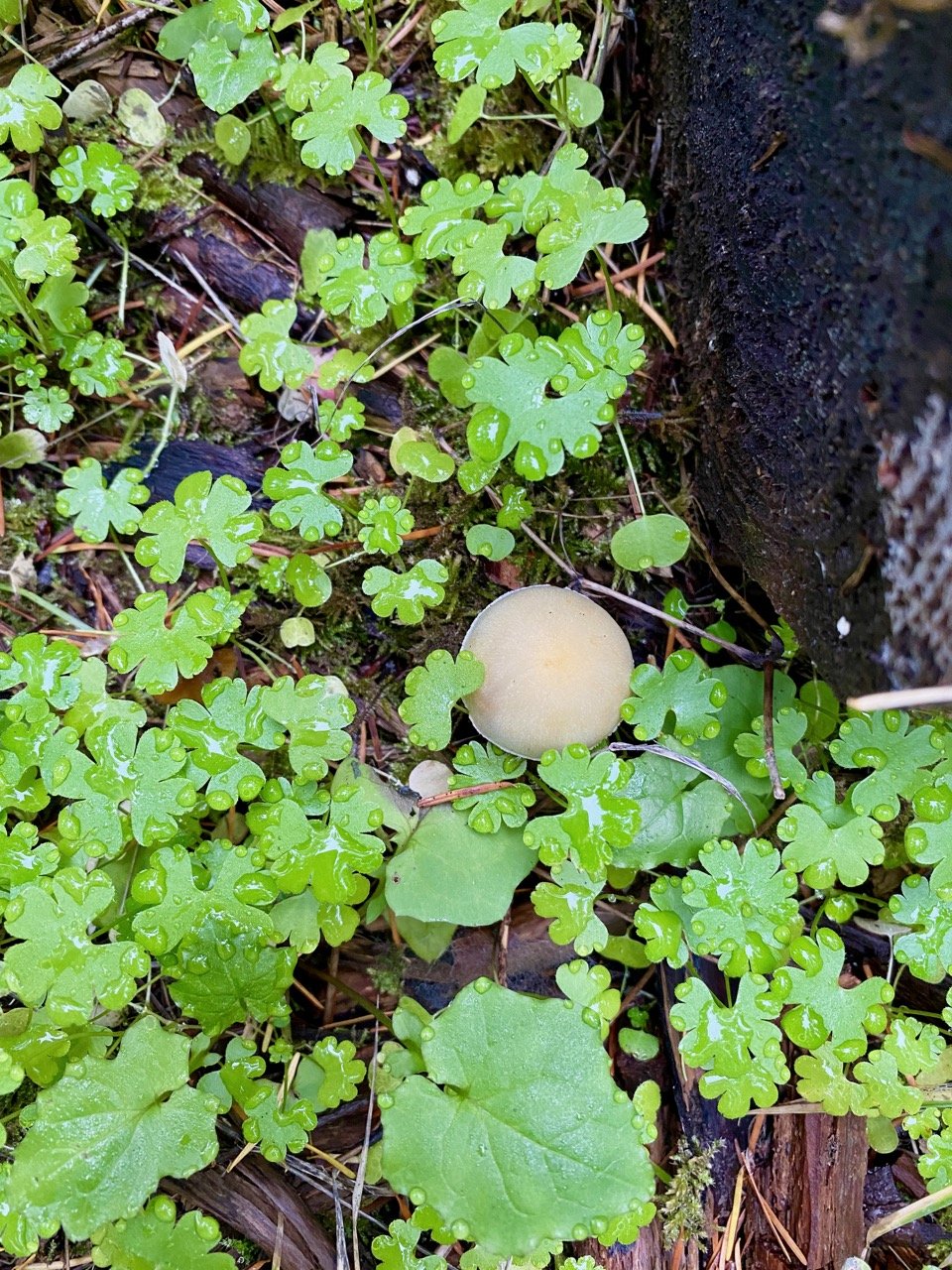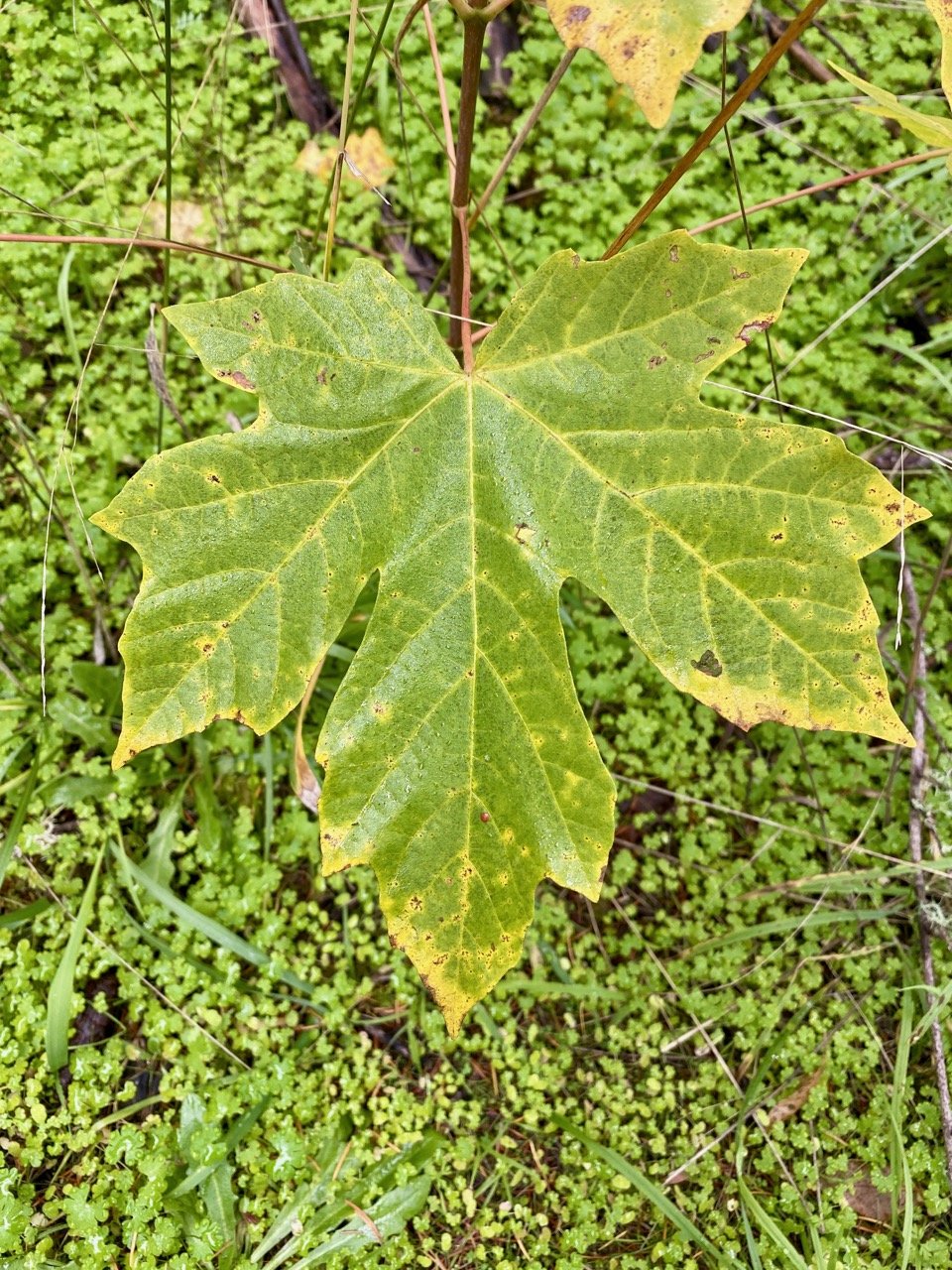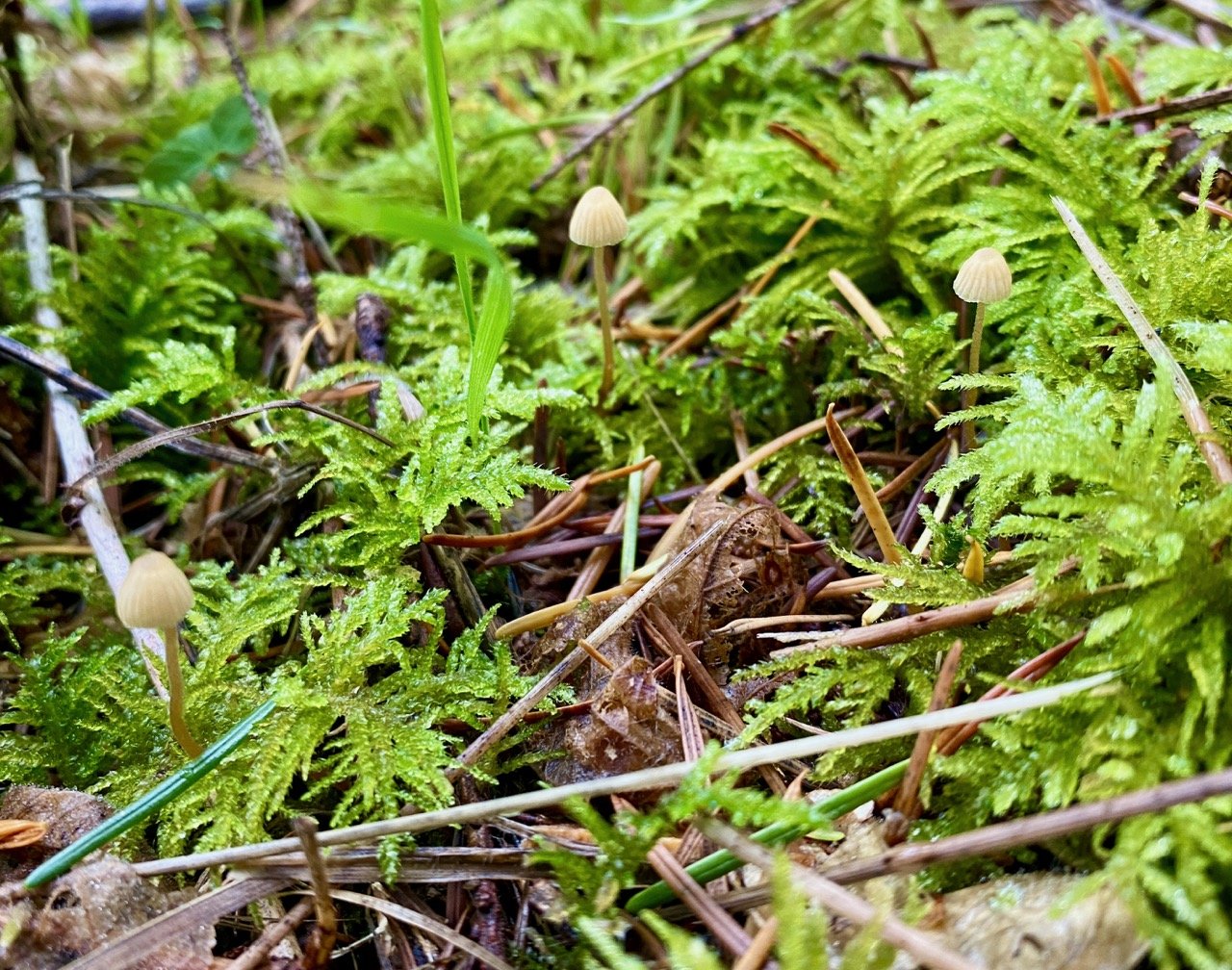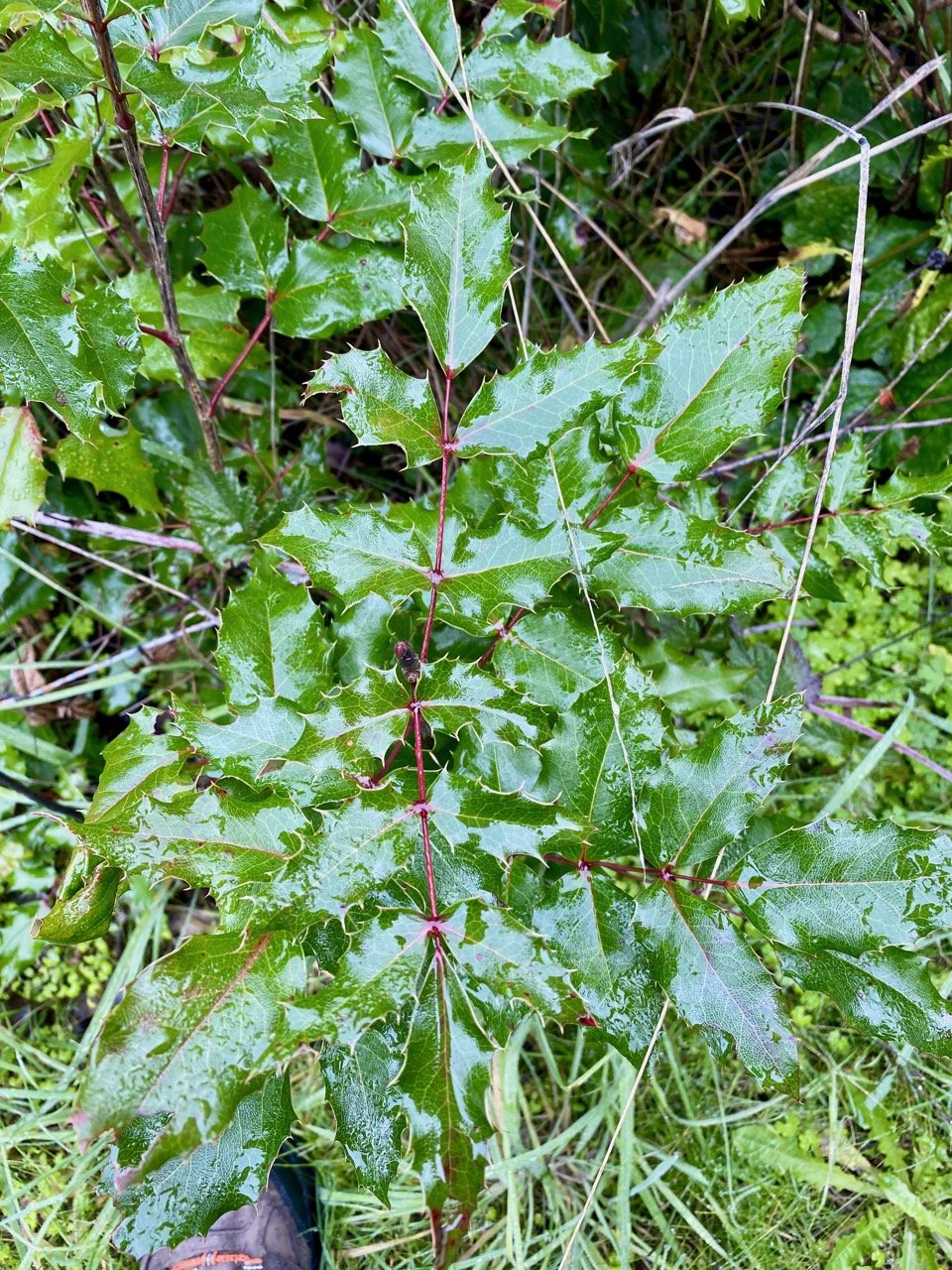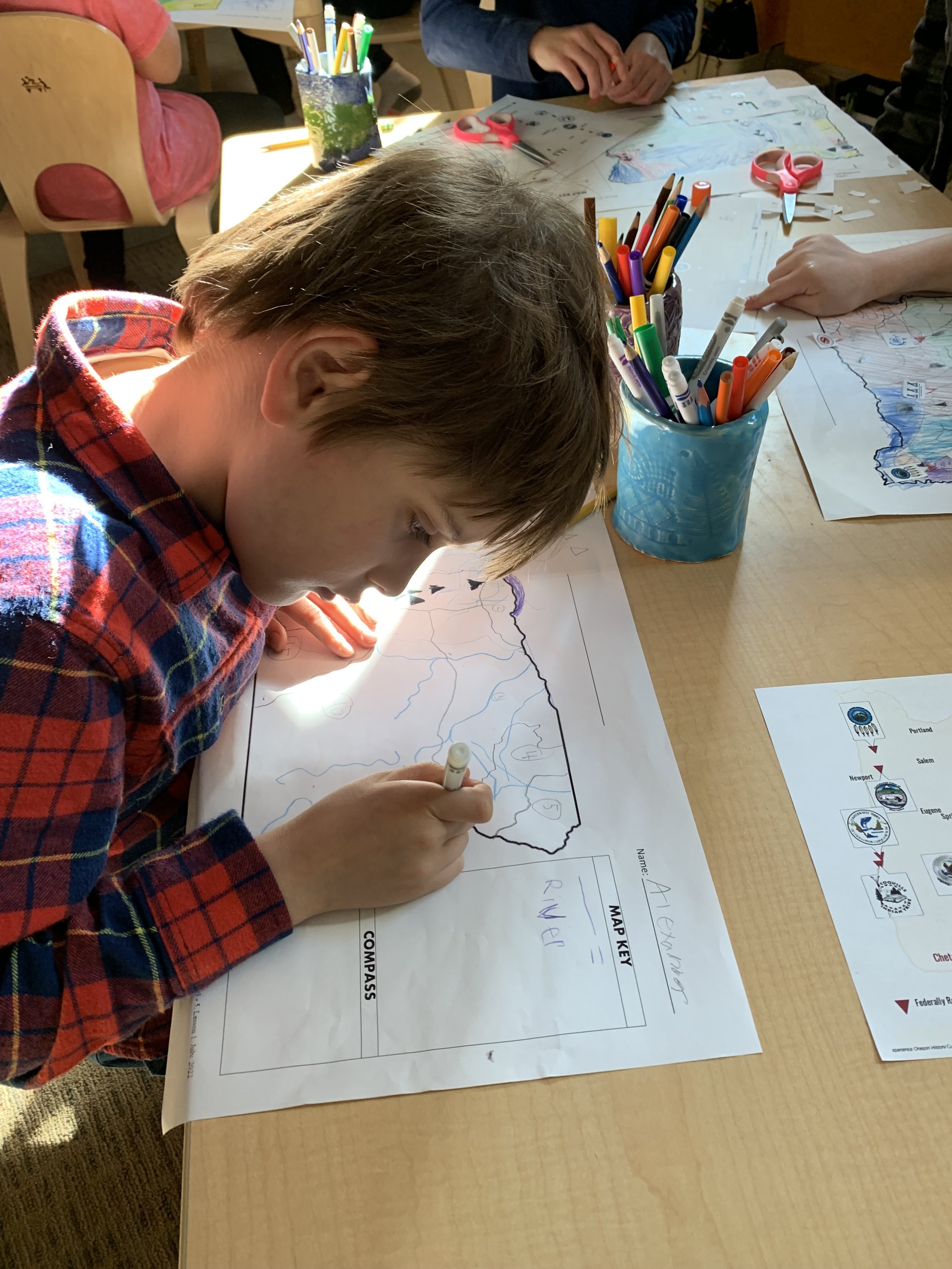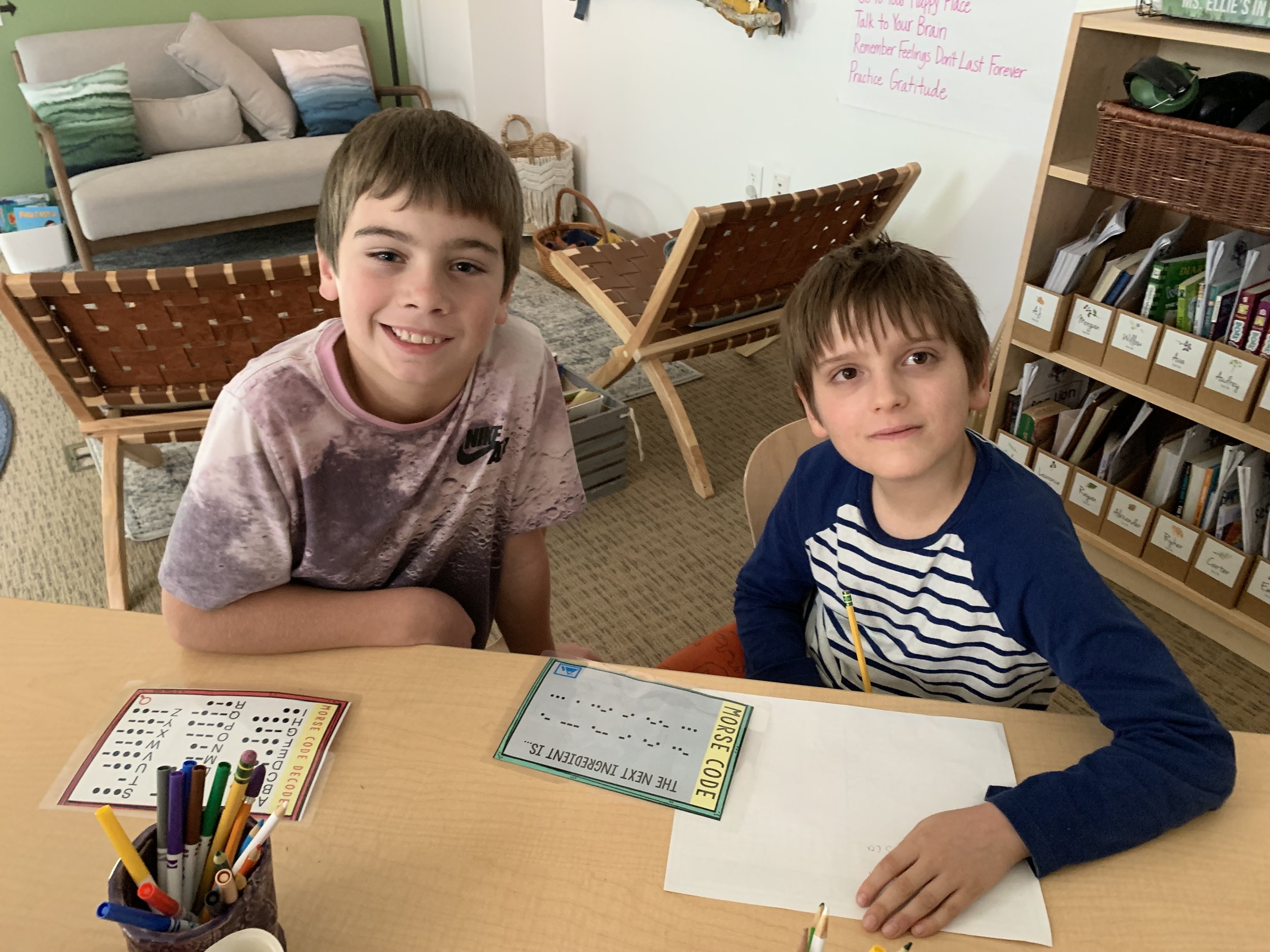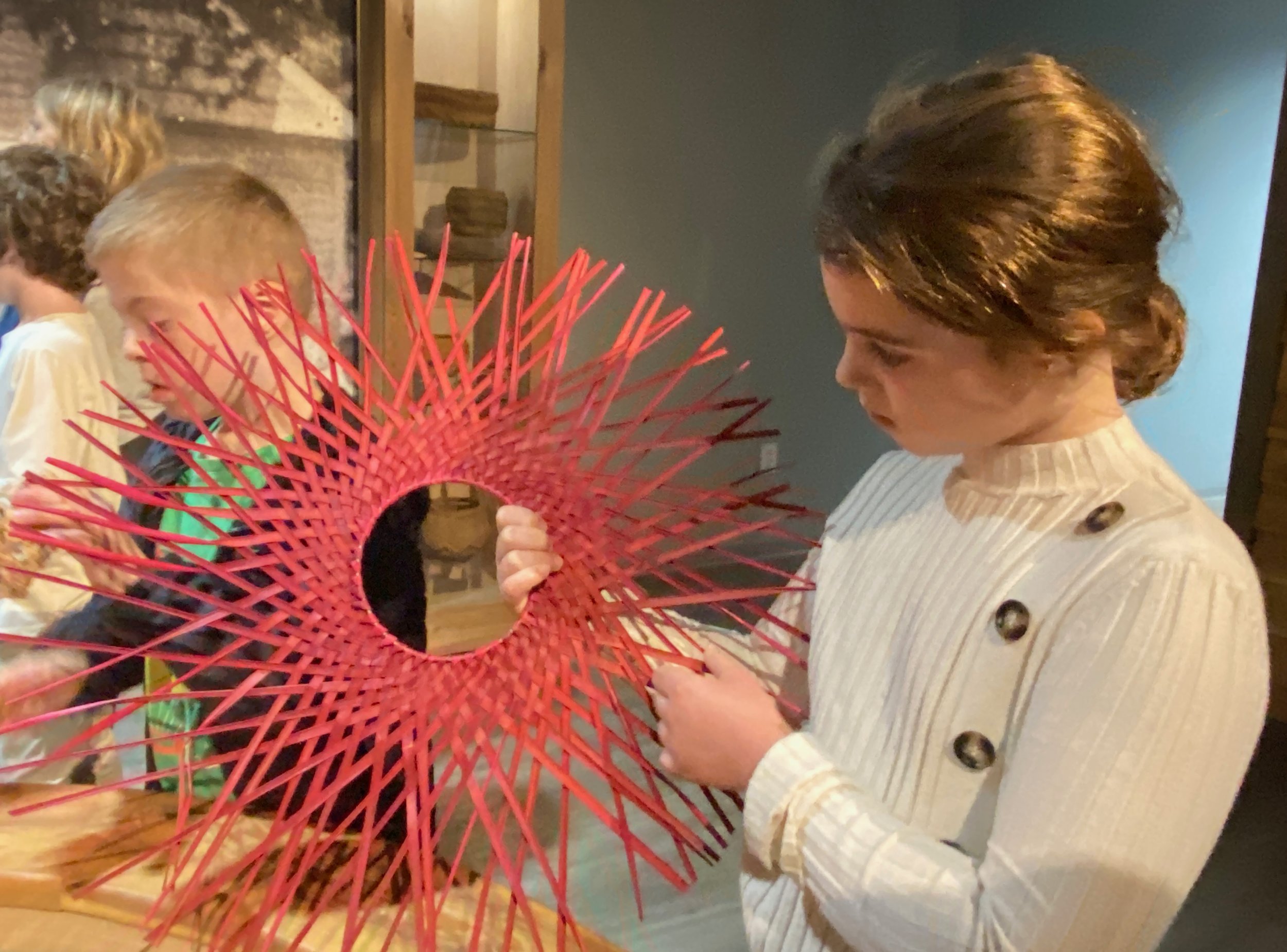Great anticipation and excitement was in the air last week as the Sea Lions prepared for their first overnight field trip to Fort Stevens Campground. With plenty of help from parent volunteers who gathered equipment and organized ingredients for meals, we were well-prepared Thursday morning as we sat together in meditation, centering ourselves and remembering the tools of resilience, kindness and community we have built together this year - all the skills we knew we needed for our own overnight expedition!
Our first stop was Ms. Ellie’s mom’s house in Arch Cape, where we ate lunch on Poppa’s Deck and enjoyed the beautiful blue ocean spread out before us. We could not have asked for a more glorious day! After lunch, we took a walk across a swinging bridge following a path which led deep into the forest (part of the Oregon Coast Trail). As we walked further into the woods, we turned off our voices, working hard to use all our senses to hear, smell and feel the forest. We imagined we were part of the Corps of Discovery, tasked with identifying the splendor of the forest around us. We meticulously sketched plants and trees we saw and added detailed descriptions of them in our journals.
Following our forest walk, we drove to the Lewis & Clark Salt Works in Seaside where the original salt cairns used by the expedition stand. The Sea Lions were intrigued by the process of salt-making and worked hard to imagine accomplishing such a daunting task.
Following the visit to the salt cairns, we drove north again to Short Sand Beach, part of the Cape Falcon Marine Reserve. There, we met with Ms. Angela and Ms. Lisa, marine biologists with the North Coast Land Conservancy who specialize in rocky intertidal habitats. We walked through old growth forests, identifying BUNS (Big trees, Understory, Nurse logs and Snags) and were captivated by the majesty of the scenery around us. Once we arrived at Short Sand Beach, the Sea Lions were lucky enough to explore tide pools with experts in their field. We spotted and learned about anemones, barnacles, and mussels as well as mobile invertebrates such as crabs, snails, limpets, sea stars, urchins, and worms. The Sea Lions were full of questions and left feeling like they had a new understanding of how to be good stewards of intertidal habitats.
After saying good bye to Ms. Angela and Ms. Lisa we were off again, heading to our cabins at Fort Stevens. Our amazing parent volunteers had dinner ready for us - boy, were we hungry! Many plates of spaghetti and meatballs were consumed while we sat together and shared stories of our spectacular day. After dinner, there were games, stories, songs and a beautiful sound bath meditation from Ms. Julie. The Sea Lions fell into bed, happy with the memories of their day!
The following morning, we were up early to help pack up our cabins and share in a delicious meal of homemade pancakes and bacon. We made our own sandwiches for lunch, then hit the road for Fort Clatsop. The museum was a nice way to revisit the curriculum we have been studying, although the Sea Lions felt that the story of the Tribal Nations whose land was taken during the expedition should have been a more central part of the story. We shared in good conversation about the stories of Tribal Nations, as well as the story of Sacagawea and York as we made our way through the exhibit. After finishing at the museum, we walked the path to the Fort, reading about the plants and trees that are native to Oregon (and well-known by tribes like the Clatsop and Chinook) but were new discoveries for Lewis and Clark.
Once inside the Fort (a replica based on the drawings of the Corps and others) we had fun imagining what it must have been like to have lived in such small quarters; cold, damp and likely missing home. In the Captain’s quarters, our ranger shared information about the process of tanning and making clothing, as well as the meticulous job of writing with a quill pen.
Following a picnic at the Fort, we loaded the vans and took the long drive home. We arrived back at school tired but so happy to have experienced such grand adventures with good friends!
